This conference has now taken place. Keep an eye out here for updates on a future event!
The 7th Sub-Sahara Spectrum Management Conference took place in a hybrid format on 3 & 4 November 2022 at the Cape Town International Convention Centre, South Africa.
The event gathered key stakeholders to discuss topical issues relating to the management and coordination of spectrum policy across the region. During the 2 days attendees had the opportunity to get involved and engage through interactive sessions, networking opportunities, exhibition area and much more.
The conference is part of The Global Spectrum Series. The world’s largest collection of regional spectrum policy conferences








 ICASA
ICASA The Independent Communications Authority of South Africa (ICASA) is the official regulator of the South African communications, broadcasting and postal services sectors.
We develop regulations for these sectors, issue licences to telecommunications and broadcasting service providers, monitor licensee compliance with rules and regulations, plan and manage the radio frequency spectrum, and protect consumers against unfair business practices and poor-quality services.
Everything we do is aimed at ensuring that all people in South Africa have access to basic communication services at affordable prices. In terms or our licence agreements, operators have to roll out services in under-serviced areas and we ensure that licensees contribute to the Universal Service and Access Fund.
ICASA falls under schedule 1 of the Public Finance Management Act No 1 of 1999. Our mandate is set out in the Independent Communications Authority of South Africa Act, Act No 13 of 2000, the Electronic Communications Act, Act No 35 of 2005, as amended, the Postal Services Act No 24 of 1998 and the Broadcasting Act No 4 of 1999 for the regulation of electronic communications, broadcasting and the postal sectors in the public interest.
The legislation empowers ICASA to grant licences, monitor licensee compliance with licence terms and conditions, develop regulations, plan and manage the radio frequency spectrum and protect consumers.
We are also mandated to receive complaints from the public about poor services provided by telecommunications, broadcasting and postal services licensees. We facilitate the resolution of these complaints or refer them to the Complaint and Compliance Committee.
ICASA was established in July 2000 as a merger of the South African Telecommunications Regulatory Authority (SATRA) and the Independent Broadcasting Authority (IBA).
We’re a Chapter 9 institution (an institution that supports democracy) in terms of the South African Constitution, and a portfolio organisation of the Department of Communications.

 African Telecommunications Union
African Telecommunications Union Founded in 1977 as a specialized agency of the Organisation of African Unity, now African Union, in the field of telecommunications, the African Telecommunications Union (ATU-UAT) took its present name in 1999. This led to the transformation of the agency into a partnership between public and private stakeholders in the Information and Communication Technology (ICT) sector.

 ITU
ITU
ITU is committed to connecting all the world’s people – wherever they live and whatever their means. Through our work, we protect and support everyone’s right to communicate.
In line with its mandate and the WSIS outcome documents, the ITU continues playing a key role in WSIS implementation and follow-up. Find out more here

 Modal Box Title
Modal Box Title 
 Modal Box Title
Modal Box Title 
 Forum Global
Forum Global Forum Global specializes in policy focused conferences and events, providing a platform for discussion and debate on topical issues across a variety of different sectors. These events are organized with clients and partners and aim to progress ideas and actions on important issues, all within a balanced and neutral setting.Forum Global is the international arm of Forum Europe, which was founded by Giles Merritt, columnist for the International Herald Tribune, and is widely recognized as the leading EU dedicated event provider.Headed by a team of events specialists with over 19 years of experience, Forum Global works successfully with businesses, institutions and governments alike. Its strategic services can maintain and develop your key policy networks, and also deliver forums where key issues can be aired and debated.

 Analysys Mason
Analysys Mason Analysys Mason is the world’s leading management consultancy focused on telecoms, media and technology (TMT). We give clarity and confidence in answering our clients’ biggest commercial questions: What strategy will best enhance value? What implementation plan will be most successful? What is the optimal positioning for five years’ time?
We bring together commercial and technical expertise across four interconnected consultancy practices strengthened by globally respected research.

 ATDI
ATDI We develop powerful software solutions to manage the radio spectrum. Operating since 1988, ATDI is a recognised leader in radio network planning and spectrum management solutions. Our success reflects our customer’s successes and enables them to stay competitive in a rapidly changing market. Innovation is at the centre of everything we do. It guides decision-making and helps us achieve our business objectives. Innovation helps us define our priorities, expectations and achievements.
www.ATDI.com

 Broadcast Networks Europe
Broadcast Networks Europe 
 Coleago Consulting
Coleago Consulting Coleago profile for conference website Founded in 2001, Coleago is a specialist telecoms management consulting firm. Our expertise has been developed exclusively within the telecoms sector and delivers a rare combination of telecoms-related commercial and technical skills and experience. Since 2001 we have worked on over 110 spectrum related projects in developed and emerging markets. Since 2017 our spectrum projects included the transition to 5G, including valuating spectrum most relevant for 5G such as 600MHz, 700MHz, 3.5GHz, and mm wave. We advise regulators on spectrum policy, spectrum roadmap, spectrum pricing, spectrum auctions and capacity building on the topic best practice in spectrum auctions. For mobile operators Coleago delivers regulatory advocacy and responses to consultation, spectrum valuation, bid strategy development and live auction support. Coleago also authored complete bid books for spectrum licence awards by means of a beauty contest.

 Ericsson
Ericsson 
 GSMA
GSMA The GSMA represents the interests of mobile operators worldwide, uniting nearly 800 operators with more than 250 companies in the broader mobile ecosystem, including handset and device makers, software companies, equipment providers and Internet companies, as well as organisations in adjacent industry sectors. The GSMA also produces industry-leading events such as Mobile World Congress, Mobile World Congress Shanghai and the Mobile 360 Series conferences.

 GSOA
GSOA 
 Huawei
Huawei 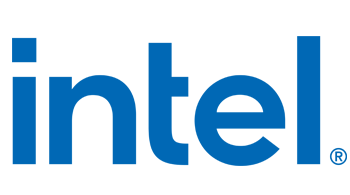
 Intel
Intel We create world-changing technology that improves the life of every person on the planet.
Intel put the silicon in Silicon Valley. For more than 50 years, Intel and our people have had a profound influence on the world, driving business and society forward by creating radical innovation that revolutionizes the way we live.
Today we are applying our reach, scale, and resources to enable our customers to capitalize more fully on the power of digital technology. Inspired by Moore’s Law, we continuously work to advance the design and manufacturing of semiconductors to help address our customers’ greatest challenges.

 Intelsat
Intelsat 
 Meta
Meta 
 Nokia
Nokia 
 OneWeb
OneWeb 
 Qualcomm
Qualcomm 
 GSOA
GSOA 
 Huawei
Huawei 
 Intel
Intel We create world-changing technology that improves the life of every person on the planet.
Intel put the silicon in Silicon Valley. For more than 50 years, Intel and our people have had a profound influence on the world, driving business and society forward by creating radical innovation that revolutionizes the way we live.
Today we are applying our reach, scale, and resources to enable our customers to capitalize more fully on the power of digital technology. Inspired by Moore’s Law, we continuously work to advance the design and manufacturing of semiconductors to help address our customers’ greatest challenges.

 Intelsat
Intelsat 
 Nokia
Nokia 
 OneWeb
OneWeb 
 Association of Professional Wireless Production Technology
Association of Professional Wireless Production Technology APWPT is an international association that represents the interests of users and manufacturers of wireless production equipment. Our work focuses on frequency requirements, frequency usage and frequency policy

 Nera Economic Consulting
Nera Economic Consulting 
 Nera Economic Consulting
Nera Economic Consulting 
 Nera Economic Consulting
Nera Economic Consulting 
 Modal Box Title
Modal Box Title 
 Modal Box Title
Modal Box Title 
 Aetha Consulting
Aetha Consulting 
 Nera Economic Consulting
Nera Economic Consulting 
 Modal Box Title
Modal Box Title 
 Modal Box Title
Modal Box Title 
 Modal Box Title
Modal Box Title 
 Modal Box Title
Modal Box Title 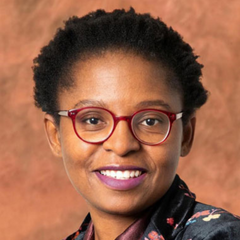
 Khumbudzo Phophi Silence Ntshavheni, Minister for Communications and Digital Technologies of South Africa
Khumbudzo Phophi Silence Ntshavheni, Minister for Communications and Digital Technologies of South Africa Ms Khumbudzo Ntshavheni is the Minister of Communications and Digital Technologies. She holds an MBA degree from the University of Bradford in the United Kingdom. She is also a graduate of Rand Afrikaans University (RAU), where she read for her undergraduate degree in Political Science and concurrently completed two postgraduate degrees in Development Studies and Labour Relations. She matriculated from Mbilwi Secondary school in Sibasa, Limpopo. Mbilwi remains one of the best performing public schools.
She started her career as a junior lecturer at the University Of South Africa (UNISA) and then proceeded to be South Africa’s youngest and first female Spokesperson of a Premier (Premier Ramatlhodi of Northern Province/ Limpopo). She later worked as a Chief Information Officer for the department of Local Government and Housing (Limpopo) and a Manager for Tourism Investment for the Trade and Investment Limpopo (TIL). Ms Ntshavheni was once the youngest Municipal Manager in South Africa when she worked in that position for the Ba- Phalaborwa Municipal Council and she also worked as Chief Operations Officer at the State IT Agency (SITA).
Her political career cuts across both the student and youth movements. She was the youngest activist and part of the leadership of the South African Youth Congress (SAYCO) in the then Northern Transvaal. She was part of the young student activists who mobilised and led the Congress of South African Students (COSAS) after it had unbanned itself in 1989.
On the day of the release of President Nelson Mandela, she addressed the Far Northern Transvaal sub-region’s (present day Vhembe Region) impromptu celebration rally on behalf of the Pioneers Movement she was leading. At the age of 14, she convinced President Nelson Mandela to adopt 16 years as the voting age of South Africa during the CODESA negotiations (this was when President Cyril Ramaphosa was the Secretary-General of the ANC). She has led both the youth and student movement at various capacity, including national executive committees. She has also led the ANC in her home Province of Limpopo including at the Provincial Executive Committee level, which she was also a Spokesperson for.
Before joining the 6th Parliament of the Republic of South Africa, Ms Ntshavheni was a serial entrepreneur with interests in transport, FMCG and agriculture.
His Excellency, President Cyril Ramaphosa appointed her the Minister of Communications and Digital Technologies on 05 August 2021. She was previously appointed Minister for Small Business Development on 29 May 2019 and acting Minister in the Presidency on 27 January 2021 until 05 August 2021

 Charley Lewis, Acting Chairperson, ICASA
Charley Lewis, Acting Chairperson, ICASA Charley Lewis (PhD, MComm) has extensive experience across the field of ICT sector policy and regulation, ranging from telecommunications and broadcasting to broadband and the Internet. His knowledge and expertise covers a wide array of key areas. These range from universal access and service, through the digital divide, consumer protection, quality of service, statistics and indicators, to spectrum management and the 4th industrial revolution.
Dr Lewis’ varied career includes: High School Teacher of Mathematics and English; Information Systems Analyst; HoD IT at COSATU (Congress of SA Trade Unions); Senior Lecturer at the University of the Witwatersrand; and Independent Analyst and Researcher. He has managed and taught professional development and academic courses on ICT policy and regulation to policy-makers, regulators and industry practitioners.
Dr Lewis holds a BA Hons in English, a Higher Education Diploma, an M Comm in Management of Information Systems, and the degree of Doctor of Philosophy. He is a published author, with his book, Regulating Telecommunications in South Africa: Universal Access and Service (Palgrave Press, 2020) following on from the research for his award-winning PhD thesis.
Dr Lewis recently served on the Ministerial Task Team on Post-Covid-19 Economic Response Strategy, having previously been appointed to serve on South Africa’s national ICT Policy Review Panel (2012-2015).
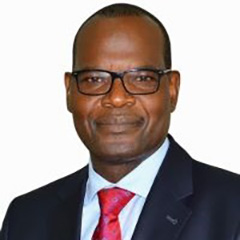
 John Omo, Secretary General, ATU
John Omo, Secretary General, ATU 
 Mario Maniewicz, Director BR, ITU
Mario Maniewicz, Director BR, ITU Mr. Mario Maniewicz was elected Director of the ITU Radiocommunication Bureau at the ITU Plenipotentiary Conference 2018 in Dubai, United Arab Emirates. He took office on 1 January 2019.
Mario Maniewicz is an electronic engineer specialized in telecommunications. He has been with the ITU for over 30 years, where he has held various positions of responsibility in the Radiocommunication and Development Bureaux as well as in ITU Regional Offices.
As Director, Mr. Maniewicz is responsible for the management of the Radiocommunication Bureau, which organizes and co-ordinates the work of the Radiocommunication Sector whose aim is to ensure the rational, equitable, efficient and economical use of the radio-frequency spectrum and satellite orbits.

 Kezias Mwale, Radiocommunications Coordinator, ATU
Kezias Mwale, Radiocommunications Coordinator, ATU Kezias Mwale is Radiocommunications Coordinator at African Telecommunications Union. He started his spectrum management career as a junior engineer in 2003 at the Zambia ICT Authority, rising to manager spectrum management in 2010 – a position he held until his appointment by the African Telecommunications Union (ATU) as a Radiocommunications Coordinator in 2012. He has been a keen and active contributor to national, regional and international spectrum management successes including development of the first Zambian national spectrum plan, the SADC spectrum plan, the GE-06 Conference during which he was appointed one of the planning experts for Eastern and Southern Africa. He has immensely contributed to the current improved status of Radiocommunications affairs of ATU.
Mr Mwale holds an MSc in Broadband and Mobile Communications with distinction from the University of Kent (2008), and an MBA from the University of Nicosia (2017).
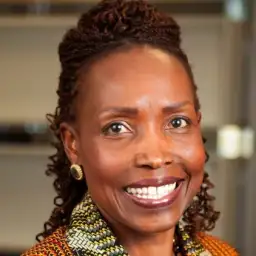
 Elizabeth Migwalla, Senior Director of Government Affairs for MEA, Qualcomm
Elizabeth Migwalla, Senior Director of Government Affairs for MEA, Qualcomm Elizabeth Migwalla is Senior Director and Head of Government Affairs (Africa) for Qualcomm International Incorporated (Qualcomm). In this role, which she has held for eight years, Elizabeth interfaces directly with key government ministries, regulatory authorities as well as regional and international regulatory forums, in order to drive the adoption of advanced broadband wireless technologies and service on the continent.
Elizabeth’s distinguished career in various aspects of telecommunications engineering, operations, services and policy spans more than 31 years. She has built a reputation as one of Africa’s leading experts on communications policy through her many accomplishments during this period. In 2012 Elizabeth was named among the top 50 female executives in Middle East and Africa by CommsMEA magazine.
Prior to joining Qualcomm Elizabeth served The Boeing Company as its Regional Director for Regulatory Affairs for four years. Elizabeth also performed a similar role for ICO Global Communications for a period of five years.
Before entering the private sector in 1997, Elizabeth worked at the Kenya Post and Telecommunications Corporation, as both head of its International Services and Planning and Engineering departments. Elizabeth holds Bachelor’s and Master’s degrees in Engineering from the University of Nairobi (Kenya), and an MBA from Bond University in Australia.

 Mohaned Juwad, Director Spectrum Policy, Intelsat
Mohaned Juwad, Director Spectrum Policy, Intelsat 
 Bienvenu Agbokponto Soglo, Director, Government Affairs Africa, Intel
Bienvenu Agbokponto Soglo, Director, Government Affairs Africa, Intel Dr. Bienvenu Agbokponto Soglo is the Director, Government Affairs Africa & IGA CTO Liaison, and a Principal Engineer at Intel Corporation. In his current role, Dr Agbokponto Soglo is responsible for developing policy strategies and advocating for favourable government policies, regulations, and standards to support Intel’s business interests in Africa. He leads the policy and government affairs work in Africa in areas such as 5G, broadband, artificial intelligence, privacy and security and other digital transformation policies. In addition, he also leads engagements with Universities, Research Institutions, NGOs in the International Government Affairs (IGA) group; for research focused on emerging technologies and projects/initiatives at the intersection of policy and technology.
He has more than 17 years’ experience and a strong track record working in the ICT and telecommunication industry with expertise in mobile telecommunication technologies, global and regional spectrum policy, broadband strategy, corporate social responsibility, as well as governmental ICT policies. Before joining Intel Corporation in 2018, Dr Agbokponto Soglo worked at Qualcomm for more than 10 years, first as Staff Engineer then as Government Affairs Director for West and Central Africa. Prior to that, he worked at Huawei Technologies as Wireless Product Manager.
He has published several technical papers on Network Control Systems in International Journals and Conferences, including in the European Journal of Control. He has also presented at many international forums, conferences and meetings across the globe including at the WTO and the ITU; and held leadership positions in ITU-R Working Party 5D; and is the Chair of the GSA ATU Spectrum team.
Dr. Agbokponto Soglo holds a Ph.D. degree in Control Science & Engineering from Beijing Tsinghua University (2005), an MSc in Control Theory & Control Engineering from Dalian University of Technology (2002), and a BSc in Automatic Control from Dalian Maritime University (1999), China. He has excellent proficiency in English, French and Mandarin.

 Scott McKenzie, Director, Coleago Consulting
Scott McKenzie, Director, Coleago Consulting Scott has over 20 years experience in the telecoms sector. Formerly the Chief Strategy Officer for KPN’s International Mobile division and CEO of KPN’s €1bn Mobile Wholesale business. Prior to that he worked in the City as an equity analyst and earlier in his career for Arthur D. Little, Ericsson and Telstra. He holds a BE in electrical engineering from Melbourne University and an MBA from Oxford University. During the past years, Scott has run many LTE strategy and spectrum valuation and auction projects.

 Nada Abdelhafez, Head of Spectrum & Regulatory Affairs, MEA region, Shure (on behalf of APWPT)
Nada Abdelhafez, Head of Spectrum & Regulatory Affairs, MEA region, Shure (on behalf of APWPT) Nada Abdelhafez is Head of Spectrum & Regulatory Affairs for Middle East and Africa at Shure Inc. In her role, she educates and promotes the spectrum needs for the PMSE industry in the MEA region. She influences regulations, ensures access for spectrum, advocates spectrum policy and promotes new technologies for audio PMSE. Nada works closely with administrations, regulatory authorities and policy makers to enable PMSE in MEA.
Before joining Shure, Nada worked for Etisalat UAE, where she was involved in various activities related to spectrum management, technology standardization and technology regulatory support.
Nada holds a Master’s degree in Electrical Engineering and has several publications related to optimization and deep learning in audio and video streaming.

 Amr Ashour, Senior Manager, Government and Regulatory Engagement, OneWeb
Amr Ashour, Senior Manager, Government and Regulatory Engagement, OneWeb Amr Ashour an Engineer graduated in 2005 holds a Bachelor of Science (B.SC.) degree in Engineering and Technology, Electrical Engineering specialization (Electronics Engineering and communication technology Branch). Specialized in Regulatory, Market Access and business development of Telecommunication aspects of Satellites systems and Networks for 15+ years.
During his area of expertise, he was exposed to several expertise and challenges, to have wide knowledge and experience in the International Radio Regulations, Radio Spectrum, Market Access, business development, telecommunications legislation, governments policies, negotiations, and licensing, which allows him to manage complex and innovative projects in challenging environment.

 Eiman Mohyeldin, Global Head of Spectrum Standardization, Nokia
Eiman Mohyeldin, Global Head of Spectrum Standardization, Nokia Eiman Mohyeldin is the global Head of Spectrum Standardization for Nokia, responsible for defining and executing Nokia’s spectrum strategy and leading Nokia’s engagement on spectrum matters with customers, regulators authorities and partners in the ecosystem worldwide. She is actively involved in the World Radio Conference (WRC) process, participating in the WRC Conferences and preparatory meetings (CPM). Eiman has also contributed and led groups for the IMT technology process (4G, 5G and recently the 6G) in ITU and CEPT. Eiman is Co-Coordinator in CEPT NOW4WRC23 promoting gender equity and parity in CEPT and IT

 Marius Engelbrecht, Senior Strategy Consultant, Southern Africa Region Public Relations Department, Huawei
Marius Engelbrecht, Senior Strategy Consultant, Southern Africa Region Public Relations Department, Huawei With 30+ years experience in the Telecommunication Industry Marius has held various Senior positions with extensive exposure to the Middle East and Africa pertaining to Product Management, Network Engineering, deployment and integration of Telecoms technologies. He is currently in the portfolio of Senior Strategy Consultant for Huawei Southern Africa Region.

 Kamal Tamawa, Public Policy Director, GSMA
Kamal Tamawa, Public Policy Director, GSMA Kamal is a Policy Manager on the Africa Team. In his role, Kamal is involved in the delivery of GSMA Advocacy programmes in the Sub-Saharan Africa region and the dissemination of messages on a wide variety of policy topics, including Spectrum.
He has worked with the Nigerian Telecoms Regulator and, prior to joining the GSMA, he worked with Etisalat Nigeria where he managed Regulatory Compliance, Spectrum Policy and Technical Regulatory matters. Kamal has also been a member of the Technical Advisory Committee that prepares Nigeria’ s participation at International fora on spectrum and other technical matters.
Kamal holds a B.Sc in Computer Engineering from the American University of Cyprus and an M.Sc in Mobile and Personal Communications from King’s College London. In his spare time, he indulges in Photography and has been witnessed cheering for Manchester United.
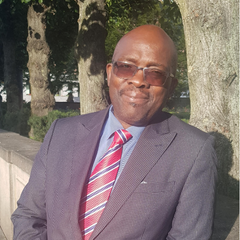
 Joe Frans, AUB Expert, Broadcast Networks Europe
Joe Frans, AUB Expert, Broadcast Networks Europe 
 El Hadjar Abdouramane, Chairman, ATU Working Group on Fixed and Mobile Services for WRC-23
El Hadjar Abdouramane, Chairman, ATU Working Group on Fixed and Mobile Services for WRC-23 
 Abraham Oshadami, Head of Information Technology Department, NCC Nigeria
Abraham Oshadami, Head of Information Technology Department, NCC Nigeria 
 Fargani Tambeayuk, Head of Connectivity Policy, SSA, Meta
Fargani Tambeayuk, Head of Connectivity Policy, SSA, Meta 
 Basebi Mosinyi - Vice-Chairperson ATU WG4B-Satellite Issues and Deputy Director, Spectrum Management, BOCRA
Basebi Mosinyi - Vice-Chairperson ATU WG4B-Satellite Issues and Deputy Director, Spectrum Management, BOCRA Bio Coming Shortly

 Peter Zimri, Councillor, ICASA
Peter Zimri, Councillor, ICASA To help set the scene for the event and identify some concrete aims and objectives, keynote speakers will be asked as part of their presentation to give an overview of what they see as the key spectrum challenges and opportunities for the region; and on what they feel should be the spectrum targets for the region in the short, medium and long term. These presentations will then be followed by an interactive voting session, where both in-person and virtual attendees will be asked to add their thoughts on these 2 questions, before a panel discussion involving key industry and policy voices is held to address the points that have been raised, and to look at the best way forward to deliver a spectrum strategy that works for Africa.

Mr. Mario Maniewicz was elected Director of the ITU Radiocommunication Bureau at the ITU Plenipotentiary Conference 2018 in Dubai, United Arab Emirates. He took office on 1 January 2019.
Mario Maniewicz is an electronic engineer specialized in telecommunications. He has been with the ITU for over 30 years, where he has held various positions of responsibility in the Radiocommunication and Development Bureaux as well as in ITU Regional Offices.
As Director, Mr. Maniewicz is responsible for the management of the Radiocommunication Bureau, which organizes and co-ordinates the work of the Radiocommunication Sector whose aim is to ensure the rational, equitable, efficient and economical use of the radio-frequency spectrum and satellite orbits.

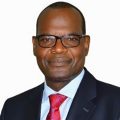

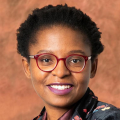
Ms Khumbudzo Ntshavheni is the Minister of Communications and Digital Technologies. She holds an MBA degree from the University of Bradford in the United Kingdom. She is also a graduate of Rand Afrikaans University (RAU), where she read for her undergraduate degree in Political Science and concurrently completed two postgraduate degrees in Development Studies and Labour Relations. She matriculated from Mbilwi Secondary school in Sibasa, Limpopo. Mbilwi remains one of the best performing public schools.
She started her career as a junior lecturer at the University Of South Africa (UNISA) and then proceeded to be South Africa’s youngest and first female Spokesperson of a Premier (Premier Ramatlhodi of Northern Province/ Limpopo). She later worked as a Chief Information Officer for the department of Local Government and Housing (Limpopo) and a Manager for Tourism Investment for the Trade and Investment Limpopo (TIL). Ms Ntshavheni was once the youngest Municipal Manager in South Africa when she worked in that position for the Ba- Phalaborwa Municipal Council and she also worked as Chief Operations Officer at the State IT Agency (SITA).
Her political career cuts across both the student and youth movements. She was the youngest activist and part of the leadership of the South African Youth Congress (SAYCO) in the then Northern Transvaal. She was part of the young student activists who mobilised and led the Congress of South African Students (COSAS) after it had unbanned itself in 1989.
On the day of the release of President Nelson Mandela, she addressed the Far Northern Transvaal sub-region’s (present day Vhembe Region) impromptu celebration rally on behalf of the Pioneers Movement she was leading. At the age of 14, she convinced President Nelson Mandela to adopt 16 years as the voting age of South Africa during the CODESA negotiations (this was when President Cyril Ramaphosa was the Secretary-General of the ANC). She has led both the youth and student movement at various capacity, including national executive committees. She has also led the ANC in her home Province of Limpopo including at the Provincial Executive Committee level, which she was also a Spokesperson for.
Before joining the 6th Parliament of the Republic of South Africa, Ms Ntshavheni was a serial entrepreneur with interests in transport, FMCG and agriculture.
His Excellency, President Cyril Ramaphosa appointed her the Minister of Communications and Digital Technologies on 05 August 2021. She was previously appointed Minister for Small Business Development on 29 May 2019 and acting Minister in the Presidency on 27 January 2021 until 05 August 2021


Hans-Martin Ihle is a member of NERA’s global Auctions Practice, which focuses on the design of allocation mechanisms, including auctions and trading, bidding strategy, and related competition, pricing, regulatory, and public policy issues. Mr. Ihle has nearly 10 years of experience in the design and implementation of auctions. He advises NERA clients on auctions and regulatory issues in energy, communications, and other sectors worldwide with a focus on the Asia-Pacific Region.
Prior to joining NERA, Mr. Ihle worked for an economic consultancy in London. During this time, he advised on the design and implementation of spectrum auctions in over a dozen countries. Mr. Ihle also implemented the software used in seven combinatorial spectrum auctions in Europe to determine winners and prices from thousands of competing bids.
Mr. Ihle advises both government bodies and companies on regulatory and policy issues in relation to spectrum management. For example, he advised UK regulator Ofcom on the development of methodologies for setting annual licence fees for liberalised 900MHz and 1800MHz spectrum to reflect full market value. His advice included the development and implementation of methodologies to determine the full market value of comparable spectrum sold in the 4G auction in 2013 using the bids submitted in this auction. For bidders, he has convened workshops on bidding strategy and run mock auctions to help the bid team understand the likely dynamics of the real auction. Mr. Ihle has developed software to support the chosen bid strategy and to analyze the behavior of other bidders. He also provides onsite client support during auctions.
In the energy arena, Mr. Ihle has worked on the design of a procurement auction for balancing services. He has also conducted research on a novel mechanism to remunerate capacity in electricity markets.
Mr. Ihle holds a Masters in Economics from the University of Cambridge, where he specialized in industrial organization, game theory, and applied econometrics.


Eiman Mohyeldin is the global Head of Spectrum Standardization for Nokia, responsible for defining and executing Nokia’s spectrum strategy and leading Nokia’s engagement on spectrum matters with customers, regulators authorities and partners in the ecosystem worldwide. She is actively involved in the World Radio Conference (WRC) process, participating in the WRC Conferences and preparatory meetings (CPM). Eiman has also contributed and led groups for the IMT technology process (4G, 5G and recently the 6G) in ITU and CEPT. Eiman is Co-Coordinator in CEPT NOW4WRC23 promoting gender equity and parity in CEPT and IT


Dr. Bienvenu Agbokponto Soglo is the Director, Government Affairs Africa & IGA CTO Liaison, and a Principal Engineer at Intel Corporation. In his current role, Dr Agbokponto Soglo is responsible for developing policy strategies and advocating for favourable government policies, regulations, and standards to support Intel’s business interests in Africa. He leads the policy and government affairs work in Africa in areas such as 5G, broadband, artificial intelligence, privacy and security and other digital transformation policies. In addition, he also leads engagements with Universities, Research Institutions, NGOs in the International Government Affairs (IGA) group; for research focused on emerging technologies and projects/initiatives at the intersection of policy and technology.
He has more than 17 years’ experience and a strong track record working in the ICT and telecommunication industry with expertise in mobile telecommunication technologies, global and regional spectrum policy, broadband strategy, corporate social responsibility, as well as governmental ICT policies. Before joining Intel Corporation in 2018, Dr Agbokponto Soglo worked at Qualcomm for more than 10 years, first as Staff Engineer then as Government Affairs Director for West and Central Africa. Prior to that, he worked at Huawei Technologies as Wireless Product Manager.
He has published several technical papers on Network Control Systems in International Journals and Conferences, including in the European Journal of Control. He has also presented at many international forums, conferences and meetings across the globe including at the WTO and the ITU; and held leadership positions in ITU-R Working Party 5D; and is the Chair of the GSA ATU Spectrum team.
Dr. Agbokponto Soglo holds a Ph.D. degree in Control Science & Engineering from Beijing Tsinghua University (2005), an MSc in Control Theory & Control Engineering from Dalian University of Technology (2002), and a BSc in Automatic Control from Dalian Maritime University (1999), China. He has excellent proficiency in English, French and Mandarin.


The Luxembourg-based satellite operator on public affairs and regulatory matters with the European Union (EU), the CEPT, the Council of Europe and the ITU, under the responsibility of the SES General Counsel. He‘s now responsible for SES regulatory affairs (advocacy and licensing) in Europe, Africa and Middle East.
Cécil looks back at more than 20 years of experience in dealing with regulatory affairs, specialised in ICT regulations for media and telecommunications. His dedicated expertise covers the supervision and impact of telecoms legislations and spectrum policies, in the context of increased liberalisation in radio frequency management and usage.
Cécil has been the chairperson of the working group on regulation in ESOA (EMEA Satellite Operators Association) for several years. In this capacity, he represents the satellite sector for the development of electronic communications regulation in Europe, Africa and Middle East, and he defends the interests of the space industry in multilateral and bilateral trade negotiations between the EU and the rest of the world.
As an active member of the Global VSAT Forum (GVF), Cécil Ameil is also contributing to the coordination of the satellite sector‘s efforts to defend access to and usage of essential radio spectrum at regional and ITU levels (including for WRCs).


Moshe is responsible for developing and implementing the research, development, and innovation strategy for the CSIR within the Networked Systems and Applications impact area.
Dr Masonta has over 20 years of experience in the telecommunication sector and holds a Doctorate Degree in Electrical Engineering (Telecommunications Technology). His work contributed towards the development of evidence-based regulations and policy directives on spectrum use and management. Recently, he was part of the Department of Communication and Digital Technologies in Communication delegate to the International Telecommunication Union’s 2022 Plenipotentiary conference in Romania.
His research interests are in radio frequency (RF) spectrum management for wireless communications technologies, 5G Open Radio Access Networks, television white space technologies, Fourth Industrial Revolution (4IR) technologies, alternative broadband wireless networks for bridging the digital divide, and supporting the national policymakers and regulators within the space of wireless communications and RF spectrum.

Despite the challenging environment created by the global pandemic, preparations for WRC-23 are progressing well. Both within Africa and elsewhere in Region 1, positions are starting to emerge and good progress on preparatory studies is being seen. And now, less than a month after this event, the second inter-regional workshop is due to be held, providing the latest opportunity for different regions to come together to discuss these emerging positions. This session will provide the opportunity to take stock in the build-up to that meeting and at the progress on preparation that is being made both in Africa and elsewhere. As we move towards the final year of preparation for WRC-23, it will discuss the challenges ahead and the work that still needs to be done to ensure a successful outcome for WRC-23 for the Sub-Sahara region and more broadly.

Kezias Mwale is Radiocommunications Coordinator at African Telecommunications Union. He started his spectrum management career as a junior engineer in 2003 at the Zambia ICT Authority, rising to manager spectrum management in 2010 – a position he held until his appointment by the African Telecommunications Union (ATU) as a Radiocommunications Coordinator in 2012. He has been a keen and active contributor to national, regional and international spectrum management successes including development of the first Zambian national spectrum plan, the SADC spectrum plan, the GE-06 Conference during which he was appointed one of the planning experts for Eastern and Southern Africa. He has immensely contributed to the current improved status of Radiocommunications affairs of ATU.
Mr Mwale holds an MSc in Broadband and Mobile Communications with distinction from the University of Kent (2008), and an MBA from the University of Nicosia (2017).












Dr. Walid SAMI is Senior Project Manager at the European Broadcasting Union (EBU), Geneva, with responsibility for co-coordinating studies on frequency planning and spectrum sharing issues. He represents EBU in number of European and International Forums dealing with Spectrum Management. He is Vice Chair of ITU-R Study Group 6 (Broadcasting) and mostly active in Working Parties 6A (Terrestrial broadcasting delivery) and 1A (Spectrum engineering techniques). Dr. SAMI has also a significant role in developing cooperation with Arab States Broadcasting Union and African Union of Broadcasters as well as Administrations members of ITU-D.

At each of the last 4 editions of this conference, a session has been held that has charted the progress, challenges and opportunities as Sub-Sahara embarks on the path to 5G and looks to deliver a harmonized continental strategy that will help to unleash its true potential. Continuing the discussion, this session will look at the work that has taken place over the last 12 months to build on crucial policy recommendations that were set out last year by ATU, and the work that is being done at a regional level by the African Union Commission. With 5G now a reality in Africa and networks starting to be rolled out across countries including Kenya, South Africa and Nigeria, how can the goal of regional harmonisation be achieved, and what impact can this have on laying the ground for the full potential of 5G to be seen?

Elizabeth Migwalla is Senior Director and Head of Government Affairs (Africa) for Qualcomm International Incorporated (Qualcomm). In this role, which she has held for eight years, Elizabeth interfaces directly with key government ministries, regulatory authorities as well as regional and international regulatory forums, in order to drive the adoption of advanced broadband wireless technologies and service on the continent.
Elizabeth’s distinguished career in various aspects of telecommunications engineering, operations, services and policy spans more than 31 years. She has built a reputation as one of Africa’s leading experts on communications policy through her many accomplishments during this period. In 2012 Elizabeth was named among the top 50 female executives in Middle East and Africa by CommsMEA magazine.
Prior to joining Qualcomm Elizabeth served The Boeing Company as its Regional Director for Regulatory Affairs for four years. Elizabeth also performed a similar role for ICO Global Communications for a period of five years.
Before entering the private sector in 1997, Elizabeth worked at the Kenya Post and Telecommunications Corporation, as both head of its International Services and Planning and Engineering departments. Elizabeth holds Bachelor’s and Master’s degrees in Engineering from the University of Nairobi (Kenya), and an MBA from Bond University in Australia.



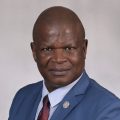
Mr. Obam leads a cross-functional team of experts to advice the government on development of ICT sector policies, strategies and legislation.
Expert in radiocommunication and spectrum anagement.
Chair of ITU Radiocommunication Advisory Group (RAG).
Awarded Head of State Commendation (HSC) by President of Kenya in recognition of distinguished & outstanding services in ICT sector.
MSc. Engineering Management – University of Southern California; BSc. – University of Nairobi


Engineer Abraham Oshadami is the Head of Spectrum Administration Department of the Nigerian Communications Commission (NCC) and has worked in the NCC for over 18 years.
A First-Class Graduate of Electrical engineering from the University of Ibadan Nigeria with more than 28 years of experience in various industry sectors both in Private and Public in the areas of Information Technology, Computer hardware designs and Maintenance, Information System Management and Spectrum Management.
He has represented Nigeria in various international capacity and events such African Telecommunications Union (ATU) and the International Telecommunications Union (ITU). He is a registered Engineer with the Council for the Regulation of Engineering in Nigeria (COREN), a member of the Nigerian Society of Engineers (NSE) and a member of the West African Society for Communication and Administration (WASCA)


Elizabeth Migwalla is Senior Director and Head of Government Affairs (Africa) for Qualcomm International Incorporated (Qualcomm). In this role, which she has held for eight years, Elizabeth interfaces directly with key government ministries, regulatory authorities as well as regional and international regulatory forums, in order to drive the adoption of advanced broadband wireless technologies and service on the continent.
Elizabeth’s distinguished career in various aspects of telecommunications engineering, operations, services and policy spans more than 31 years. She has built a reputation as one of Africa’s leading experts on communications policy through her many accomplishments during this period. In 2012 Elizabeth was named among the top 50 female executives in Middle East and Africa by CommsMEA magazine.
Prior to joining Qualcomm Elizabeth served The Boeing Company as its Regional Director for Regulatory Affairs for four years. Elizabeth also performed a similar role for ICO Global Communications for a period of five years.
Before entering the private sector in 1997, Elizabeth worked at the Kenya Post and Telecommunications Corporation, as both head of its International Services and Planning and Engineering departments. Elizabeth holds Bachelor’s and Master’s degrees in Engineering from the University of Nairobi (Kenya), and an MBA from Bond University in Australia.


Mr. Obam leads a cross-functional team of experts to advice the government on development of ICT sector policies, strategies and legislation.
Expert in radiocommunication and spectrum anagement.
Chair of ITU Radiocommunication Advisory Group (RAG).
Awarded Head of State Commendation (HSC) by President of Kenya in recognition of distinguished & outstanding services in ICT sector.
MSc. Engineering Management – University of Southern California; BSc. – University of Nairobi




Franklin has over 15 years’ experience in IT & Telecoms industry spanning both technical and commercial roles. In the current role he is responsible for the Fixed Data business charged with delivering great Customer Experience to enable Safaricom become the trusted partner of choice for connectivity, security and entertainment for Homes and Businesses. He has grown the business to connect over 250,000 customers using Fibre and Fixed Wireless Access technologies most recently using 5G. Beyond connectivity, he has delivered rich value adds to the connected customers such as content, internet security and parental control, Home Insurance, Converged Fixed and Mobile solutions, Surveillance among others.
Franklin holds an MA in Project Planning and Management, BSc. in Computer Science and is currently pursuing an MA in Philosophy.




Engineer Abraham Oshadami is the Head of Spectrum Administration Department of the Nigerian Communications Commission (NCC) and has worked in the NCC for over 18 years.
A First-Class Graduate of Electrical engineering from the University of Ibadan Nigeria with more than 28 years of experience in various industry sectors both in Private and Public in the areas of Information Technology, Computer hardware designs and Maintenance, Information System Management and Spectrum Management.
He has represented Nigeria in various international capacity and events such African Telecommunications Union (ATU) and the International Telecommunications Union (ITU). He is a registered Engineer with the Council for the Regulation of Engineering in Nigeria (COREN), a member of the Nigerian Society of Engineers (NSE) and a member of the West African Society for Communication and Administration (WASCA)

African countries proposed at WRC-19 to study the identification of 6425-7125 MHz for IMT. The proposal is on the agenda of WRC-23.In July last year, a recommendation was made by ATU to enable licence-exempt technologies to operate in 5925-6425 MHz. Globally There is a debate on the balance of unlicensed and licensed services in the 5925-7125 MHz band. The IMT community argues that broadband connectivity in Africa is largely provided through mobile networks, and this band would provide additional capacity for 5G and for fixed wireless access in the future. On the other hand the WiFi community argue that making it available on a licence-exempt basis is vital to help addressing the digital divide, improving rural connectivity and accelerate economic innovation. This session will look at the arguments on both sides, and at where the balance of licenced and licence-exempt use across the 6Ghz band should lie.
● Where does the balance lie between licenced and licence-exempt use across the 6Ghz spectrum?
● What is the status of the WRC-23 preparations and what should be the approach of the Sub-Sahara region to the upper portion of the band?
● What socio-economic benefits would be offered by making the spectrum in the band available on an unlicenced or a licensed basis respectively? What approach would provide the best option to maximise these benefits across both developed and developing countries in the Sub-Sahara region?
● To what extent is co-existence between incumbent and potential new users such as WiFi and 5G feasible? What are some potential challenges would this present and how could these be overcome?
● Is there a solution that would ensure that sufficient spectrum in the band is available for both WiFi and IMT users?

Jonathan supports telecoms operators and regulators in areas including 5G network strategy, spectrum valuation and cost modelling. In particular, he has managed the development of complex quantitative models used to help operators develop their approach to 5G and to prepare for 5G spectrum auctions.
Jonathan’s core expertise is in supporting clients to assess their spectrum strategy, often ahead of major spectrum awards. This includes regulatory support, spectrum valuation, network strategy and bid strategy work. He has also supported clients to develop their business plans, and to prepare network costing models ahead of regulatory processes.
Prior to joining Aetha, Jonathan studied Physical Sciences at the University of Cambridge.


Kalvin is responsible for delivering economic analysis across a range of GSMA programmes and initiatives. He works particularly closely with Mobile for Development (M4D), overseeing the Mobile Connectivity Index and the Mobile Industry SDG Impact Report, and supports the Regulatory and Spectrum policy teams. Recent work includes analysing the impact of spectrum pricing on consumers and assessing policy options for the 6 GHz frequency band. Before joining the GSMA, Kalvin worked at Ofcom and the UK Competition Commission.







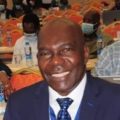
From September 2016 to date Mortimer Hope has been Managing Director of GH Communications, an ICT Policy, Regulatory, Strategy and Business Development Consultancy based in South Africa. He is also Associate Director and Africa Lead at Policy Impact Partners (PIP), a global Consultancy Platform which helps clients impact connectivity and digital policies. In these roles he has assisted large multinational organisations with connectivity policies and future spectrum advocacy. He has also provided regulatory training and assisted telecom operators with business strategy.
Some projects Mortimer has worked on include TV White Spaces regulatory frameworks in South Africa, Kenya, Nigeria and Ghana; High Altitude Platform Stations (HAPS) trial in South Africa and additional spectrum for HAPS at the ITU and African Telecommunications Union (ATU); Tiered Spectrum Sharing report covering South Africa, Colombia and Malaysia; Licence exempt Wi-Fi in the 6 GHz band (Wi-Fi 6E); Regulatory Sandbox Framework; rural broadband projects in Mozambique and Benin; and a HAPS study for the Eastern Cape Province of South Africa.
Mortimer is a regular speaker at Connectivity conferences in Africa. He has delivered presentations to various audiences, including to SADC Ministers responsible for ICT, on HAPS, rural broadband connectivity, spectrum sharing and the effects on humans of electromagnetic frequencies. He also publishes opinion pieces such as this one on connecting the unconnected.


Bio Coming Shortly


Charley Lewis (PhD, MComm) has extensive experience across the field of ICT sector policy and regulation, ranging from telecommunications and broadcasting to broadband and the Internet. His knowledge and expertise covers a wide array of key areas. These range from universal access and service, through the digital divide, consumer protection, quality of service, statistics and indicators, to spectrum management and the 4th industrial revolution.
Dr Lewis’ varied career includes: High School Teacher of Mathematics and English; Information Systems Analyst; HoD IT at COSATU (Congress of SA Trade Unions); Senior Lecturer at the University of the Witwatersrand; and Independent Analyst and Researcher. He has managed and taught professional development and academic courses on ICT policy and regulation to policy-makers, regulators and industry practitioners.
Dr Lewis holds a BA Hons in English, a Higher Education Diploma, an M Comm in Management of Information Systems, and the degree of Doctor of Philosophy. He is a published author, with his book, Regulating Telecommunications in South Africa: Universal Access and Service (Palgrave Press, 2020) following on from the research for his award-winning PhD thesis.
Dr Lewis recently served on the Ministerial Task Team on Post-Covid-19 Economic Response Strategy, having previously been appointed to serve on South Africa’s national ICT Policy Review Panel (2012-2015).

The process of bringing spectrum to market is not a simple one, and there are many different elements for regulators to consider when looking to design a process for assigning spectrum licences that ensures an efficient allocation of the available bandwidth at a fair price; and ultimately delivers a competitive market and encourages innovation. With a number of successful awards having taken place recently in the region, this session will provide the opportunity to look back at these and at the approaches that were taken. It will then move on to look more broadly at the different options that are available to regulators when looking at setting spectrum prices and designing award mechanisms, and at what needs to be done in order to ensure a successful outcome. Focussing on the importance of planning ahead and the role that the provision of a roadmap for spectrum release can play in helping to provide regulatory certainty and promote investment and innovation, it will look to the future and at what needs to be done to ensure that the full value of spectrum that is made available can be harnessed as quickly and as efficiently as possible.
In March this year, ICASA successfully completed an auction of key spectrum bands, with six bidders paying a total of R14 billion for licences across the 700 MHz, 800 MHz, 2.6 GHz and 3.5 GHz bands. This session will offer a unique ‘360 degree’ case study of the auction and award process, with perspectives from the regulator responsible for the auction; the experts advising on design and strategy; and operators who took part and were successful in securing spectrum.



Hans-Martin Ihle is a member of NERA’s global Auctions Practice, which focuses on the design of allocation mechanisms, including auctions and trading, bidding strategy, and related competition, pricing, regulatory, and public policy issues. Mr. Ihle has nearly 10 years of experience in the design and implementation of auctions. He advises NERA clients on auctions and regulatory issues in energy, communications, and other sectors worldwide with a focus on the Asia-Pacific Region.
Prior to joining NERA, Mr. Ihle worked for an economic consultancy in London. During this time, he advised on the design and implementation of spectrum auctions in over a dozen countries. Mr. Ihle also implemented the software used in seven combinatorial spectrum auctions in Europe to determine winners and prices from thousands of competing bids.
Mr. Ihle advises both government bodies and companies on regulatory and policy issues in relation to spectrum management. For example, he advised UK regulator Ofcom on the development of methodologies for setting annual licence fees for liberalised 900MHz and 1800MHz spectrum to reflect full market value. His advice included the development and implementation of methodologies to determine the full market value of comparable spectrum sold in the 4G auction in 2013 using the bids submitted in this auction. For bidders, he has convened workshops on bidding strategy and run mock auctions to help the bid team understand the likely dynamics of the real auction. Mr. Ihle has developed software to support the chosen bid strategy and to analyze the behavior of other bidders. He also provides onsite client support during auctions.
In the energy arena, Mr. Ihle has worked on the design of a procurement auction for balancing services. He has also conducted research on a novel mechanism to remunerate capacity in electricity markets.
Mr. Ihle holds a Masters in Economics from the University of Cambridge, where he specialized in industrial organization, game theory, and applied econometrics.


Vutomi Mabunda-Jones is the Managing Director of Tirhani Auctioneers, a South African Auction house specialising in the disposal of movable and immovable assets. Vutomi is a former commercial pilot who holds executive and non-executive directorships in the following fields: Technology, Software Development, Web Development and Management Services.
Vutomi was the local project lead for the three-party consortium (Nera Consortium) that executed the spectrum auction on behalf of the Independent Communication Authority of South Africa.


I have more than 35 years professional experience in the telecommunication sector (with Telkom) of which almost 30 years focussed on radio frequency spectrum matters.
During my professional career at Telkom I worked in:
Regulatory Affairs – Spectrum, Technical and International regulations (Executive) (current)
Regulatory Affairs – Spectrum regulations, standards and ITU matters (Senior Specialist)
Radio and spectrum strategy and regulations (Manager)
Radio regulations and radio interference (Manager)
Spectrum management (Technologist) and
Network transmission maintenance (Technician/Senior Technician).
During my almost 30 years involved in spectrum management I represented Telkom on various national, regional and international forums and committees:
Since 1997 I attended all ITU World Radiocommunications Conferences (international treaty conference for the development of International Radio Regulations) as part of the South African delegation where I represented Telkom, South Africa, SADC and occasionally Africa as Rapporteur on various conference agenda items. I successfully led the company delegation to WRC-03, WRC-07, WRC-12 and WRC-19.
In 2013 I was elected by ATU (African Telecommunication Union) to represent Africa as Vice-Chairman to ITU’s JTG4-5-6-7, which was responsible for preparation for WRC-15 Agenda Items 1.1 and 1.2 dealing with IMT (International Mobile Telecommunications) matters. I am currently the SA and SADC Rapporteur for WRC-19 agenda item 1.13 responsible for mobile IMT-2020 spectrum.
In 2009 I was invited by CRASA (Communications Regulatory Authority of Southern Africa) to develop the SADC regional frequency allocation band plan, which frequency plan was adopted by the SADC Ministers in 2010 and subsequently updated following WRC-12 and WRC-15. I was also appointed by the ITU in 2010 to develop spectrum related papers (e.g. use of spectrum for Public Protection and Disaster Relieve in SADC) for CRASA.
I represent the company at SABS Technical Committees (TC) and Sub-Committees (SC) on wireless standardisation and is currently the Chairperson of SABS TC74/SC05 (Radio Communications).
I was responsible for many written submissions and oral representations at the Authority (ICASA), Department of Communications/Department of Communications and Digital Technology, Department of Science and Technology and Parliament on matters related to radio frequency spectrum, technical regulations and standards.
In 2006 and 2010 I represented South Africa, as part of the SA delegation, to the ITU Plenipotentiary Conference in Antalya (Turkey) and Guadalajara (Mexico) respectively. In my current role at Telkom I am responsible for all spectrum and international regulatory matters as well as all technical regulations within Telkom.

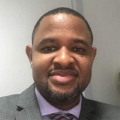
Bio Coming Shortly


Dobek Pater has over twenty years’ experience in the telecoms industry and is currently an ICT analyst with Africa Analysis, working on a wide range of projects in Africa for a diverse client base. His previous experience includes working for a South African fibre optic cabling and systems integration company, later joining an ICT market research and advisory company in the capacity of a telecommunications analyst, and a short stint in the consumer product research field. Dobek’s career in the telecommunications sector has exposed him to strategies and technologies used by various telecoms operators and service providers, as well as telecommunications market fundamentals. In his capacity as an ICT analyst he has been responsible for analysis of numerous ICT markets in Africa and directly participated in major projects in over twenty African countries. Dobek has also presented at numerous shows and conferences in South Africa and other African countries on topics ranging from telecoms market opportunities to future technology applications. He is frequently quoted in the local and international media, and regularly appears on TV and radio shows. Dobek concentrates on the telecommunications market (including fixed line, mobile, satellite / VSAT, wireline, wireless, wholesale and retail markets), as well as the data centre and IT services markets. Among others, he undertakes market research and analysis, market modelling and forecasting, business case development, and provides advisory services.

Closing the digital divide and ensuring that citizens across Africa have reliable access to fast, reliable and affordable broadband services has been a long-standing challenge for regulators across the region. Progress in this area is undoubtably being seen, and according to the ITU, the number of people across Africa with access to broadband grew 2690% from 2010-2020 (admittedly from a very low base), with the price of access to connectivity in the region falling more than in any other region for the same period. However, there is still an extremely long way to go and much work still to be done. This session will look at the approaches that are being seen in different countries across the region, and explore the solutions that have provided the greatest level of success. It will explore recent advancements in technologies such as fixed wireless access and advanced satellite systems, and the role that these can play in delivering a solution, and the way in which industry and regulators can come together in advancing the accessibility of broadband in many parts of Africa is attributable both to the investment and business activity of the private sector as well as the policy and regulatory environment created by the authorities.

Jean-Jacques is a Senior Engineer in Radiocommunications, Electronics and Computer science who graduated in Paris in 1983.
J.J. Massima-Landji is actually ITU representative for Central Africa and Madagascar resident in Yaoundé since 2009. As Senior Adviser to the Ministry of Communications and Telecommunications of GABON, he was posted in Geneva where he spent 9 years in ITU Headquarters in Geneva as the Permanent Representative of Gabon to ITU from 2004 to 2009 and at the Telecommunications development Bureau (BDT) as Coordinator of Iraq Project, from 2000 to 2004. He spent two years as Regional Director for Central Africa for ICO Global Communications, Office based in South Africa from 1998 to 2000.”.
Senior Engineer and Director of Posts and Telecommunications in the Gabonese administration, he managed the Telecommunications of his country for more than 15 years ( Head of Telematics and computer services from 2004 to 2006, Director of Studies and Computer Science 2006 to 2010; Central Director of National Telecommunications from 1990 to 1994 and Deputy Director-General of OPT( Office des Postes et Telecommunications), Director General of the T.I.G( Societé des Telecommunications Internationales du Gabon ) in charge of Telecommunications from 1994 to 1998, and was the first Chairman of the Regulatory Body of Gabon: “Agence de Regulation des Télécommunications.
Recognized as an ICT senior expert worldwide he has a proven experience of more than 37 years in the field of ICT and computer science. He contributed to the implementation of RASCOM as a continental expert and chaired the RASCOM Board of Directors in 1994 and 1995. He attended most of the ICT and ITU big conferences.
He served also as a lecturer in the National School of post and telecommunications and in the African Institute of Informatics (IAI) from 1984 to 1987 in Libreville Gabon.
He is French-speaking, fluent in English and also graduated in English with a UN Proficiency.


Amr Ashour an Engineer graduated in 2005 holds a Bachelor of Science (B.SC.) degree in Engineering and Technology, Electrical Engineering specialization (Electronics Engineering and communication technology Branch). Specialized in Regulatory, Market Access and business development of Telecommunication aspects of Satellites systems and Networks for 15+ years.
During his area of expertise, he was exposed to several expertise and challenges, to have wide knowledge and experience in the International Radio Regulations, Radio Spectrum, Market Access, business development, telecommunications legislation, governments policies, negotiations, and licensing, which allows him to manage complex and innovative projects in challenging environment.


Bio Coming Shortly


Bio Coming Shortly


With 30+ years experience in the Telecommunication Industry Marius has held various Senior positions with extensive exposure to the Middle East and Africa pertaining to Product Management, Network Engineering, deployment and integration of Telecoms technologies. He is currently in the portfolio of Senior Strategy Consultant for Huawei Southern Africa Region.

Back in 2013, an agreement was signed by 47 Sub-Saharan African countries to turn off broadcasting signals in the 700 MHz and 800 MHz bands by June 2015. At the time, this was hailed as a “landmark agreement that would make Africa the first region to be in position to allocate spectrum in the 700 MHz and 800 MHz digital dividend bands to mobile services”. We are now 7 years on from this deadline however, this objective of digital switchover has still not been achieved in many countries. And the situation often remains complex, with legal challenges amongst a number of other factors that is blocking progress across different countries. This session will look at the factors that have contributed to this continued delay in switchover and the challenges that still need to be overcome in order to finally be able to move forward. Looking wider across the UHF band, it will also build on the discussions that took place in the WRC-23 panel discussion earlier today, to explore the work that is being done to look at the future of the 470-694 MHz band, and the overall use and needs of existing services across the entire 470-960 MHz range. What does the future hold for the key users across the UHF frequencies, and how can it be ensured that the potential of spectrum in these frequencies is maximised for the benefit of all?

Mark (Principal) is part of Analysys Mason’s Regulation practice, and is based in the company’s Cambridge office. He joined Analysys Mason in 2003 and has advised a variety of clients, including national regulators, fixed and mobile operators, media players, equipment vendors and investors on a wide range of projects around the world.
Mark’s work focuses mainly on radio spectrum and wider regulatory issues across the telecoms and media sectors. Among other topics, he has particular expertise in spectrum valuation and auction support, spectrum policy, and forecasting the future demand for spectrum.
His other areas of expertise include media regulation, with a focus on competition issues in pay-TV markets, content rights issues and TV advertising. Mark’s wider regulatory experience includes work on a range of competition issues, such as wholesale pricing, predatory pricing and margin-squeeze analysis, and core and access network cost modelling. Mark has also advised on the pricing of fixed and mobile telephony services and has managed several projects to support operators in the introduction of new tariff plans.
Mark trained as a mathematician and has an MA from the University of Cambridge, as well as a Diploma in Computer Science, also from Cambridge.


Scott has over 20 years experience in the telecoms sector. Formerly the Chief Strategy Officer for KPN’s International Mobile division and CEO of KPN’s €1bn Mobile Wholesale business. Prior to that he worked in the City as an equity analyst and earlier in his career for Arthur D. Little, Ericsson and Telstra. He holds a BE in electrical engineering from Melbourne University and an MBA from Oxford University. During the past years, Scott has run many LTE strategy and spectrum valuation and auction projects.


A dedicated and experienced communications professional with 26 year’s experience in the communications industry including 9 year’s regulatory experience in the broadcasting and telecommunications industry being employed with the Communications Regulatory Authority of Namibia since 2012. She has been instrumental in setting regulatory frameworks in Namibia for spectrum management, infrastructure sharing, quality of service, type approval, numbering and a service technology neutral licensing regime for the telecommunications and broadcasting industry including drafting of regulations and consultative documents. Prior to joining the regulator she was responsible for various technical and commercial projects from scoping and planning stage to completion for two mobile operators in Namibia. Currently she serves as vice chairperson of the CRASA Electronic Communications Committee, SADC Rapporteur for Agenda Item 1.5 and Vice-Coordinator for chapter 1 and ATU champion for Agenda Item 1.5 in preparation for WRC-23 as well as Chairperson of WG2 within ITU TG 6/1 for Agenda Item 1.5.


Nada Abdelhafez is Head of Spectrum & Regulatory Affairs for Middle East and Africa at Shure Inc. In her role, she educates and promotes the spectrum needs for the PMSE industry in the MEA region. She influences regulations, ensures access for spectrum, advocates spectrum policy and promotes new technologies for audio PMSE. Nada works closely with administrations, regulatory authorities and policy makers to enable PMSE in MEA.
Before joining Shure, Nada worked for Etisalat UAE, where she was involved in various activities related to spectrum management, technology standardization and technology regulatory support.
Nada holds a Master’s degree in Electrical Engineering and has several publications related to optimization and deep learning in audio and video streaming.


Bertus Ehmke is the Group Head of Technical Regulatory Affairs in the MTN Group. He has worked in MTN in various capacities in the past 25 years throughout Africa and the Middle East
Formerly, he served in Group Technology leading Technology and Spectrum Strategy.
He represents the Group’s interests at several industry fora such as the GSMA Future Spectrum Group, Strategic Spectrum Management Group, Future of Spectrum Access Group and EMF Forum.
Bertus holds Bachelor’s Degrees in Electronic Engineering, Commerce and Marketing Management and a Diploma in Mobile Communications




Leader of Spectrum and Policy Research Group of China Unicom, responsible for interference coordination solution between 5G and FSS in C band, and it’s national implementation.


Alexander Kuhn is a Senior Government Official at the German Federal Network Agency (BNetzA).
He is Deputy Head of Section “International Frequency affairs, frequency utilization concepts and the frequency usage plan” and the preparation for World Radiocommunication Conferences is under his responsibility. He lead the European countries (CEPT) at WRC 2015 and 2019.

The 3.4GHz-3.6GHz portion of the C-band has been allocated to mobile on a primary basis across Africa and many other regions of the world. The future of the 3.3GHz-3.4GHz and the 3.6GHz-3.8GHz portions is due to be discussed in detail at WRC-23. Regulators and policymakers tasked to make a decision on this highly sought after spectrum are faced with the question of where the balance lies when looking to meet the needs of both mobile and satellite in the 3.3-4.2 GHz band that both see as vital to their future. This session will explore the work being done in this area both ahead of WRC-23 and more broadly, and the positions that are emerging. It will look at the extent to which it is important that a harmonised approach is achieved both within the Africa and across region 1, as well as discussing the possibility of co-existence between mobile and satellite in the band, and the extent to which new emerging technologies could help to make this a more realistic option.

Jonathan supports telecoms operators and regulators in areas including 5G network strategy, spectrum valuation and cost modelling. In particular, he has managed the development of complex quantitative models used to help operators develop their approach to 5G and to prepare for 5G spectrum auctions.
Jonathan’s core expertise is in supporting clients to assess their spectrum strategy, often ahead of major spectrum awards. This includes regulatory support, spectrum valuation, network strategy and bid strategy work. He has also supported clients to develop their business plans, and to prepare network costing models ahead of regulatory processes.
Prior to joining Aetha, Jonathan studied Physical Sciences at the University of Cambridge.




Hazem Moakkit is a veteran of the satellite industry where he has worked for over 22 years in various capacities. He currently serves as the Vice President of Spectrum Development at O3b Networks where he leads the creation and implementation of O3b’s global spectrum strategy.
Prior to O3b, Hazem spent 5 years at Yahsat in the United Arab Emirates as the Director or Regulatory & Spectrum Affairs where he created and managed the spectrum strategy, and was a key member of the corporate strategy team. Mr. Moakkit led the acquisition of vital orbital assets for the start-up operator and worked closely with regulators to obtain the required licenses. He was also instrumental in formulating the expansion strategy for Yahsat in Africa and South America.
Prior to joining Yahsat, Mr. Moakkit worked in various roles at Intelsat (previously PanAmSat) where he rose through the ranks to become a key member of the spectrum & regulatory group in Washington. There, Mr. Moakkit was responsible for frequency coordination activities for the Intelsat fleet of over 50 satellites spanning multiple administrations. During his tenure, he also worked in various system and sales engineering roles.
Early on in his career, Mr. Moakkit was a system integrator at ATCI, a nascent yet ambitious satellite system integrator based in Mesa, Arizona. While at ATCI he gained valuable hands-on experience designing, building and operating RF systems for Fortune 500 clients.
Mr. Moakkit holds a bachelor’s degree in Electrical Engineering from Arizona State University, an MBA degree from Georgetown University.


Kamal is a Policy Manager on the Africa Team. In his role, Kamal is involved in the delivery of GSMA Advocacy programmes in the Sub-Saharan Africa region and the dissemination of messages on a wide variety of policy topics, including Spectrum.
He has worked with the Nigerian Telecoms Regulator and, prior to joining the GSMA, he worked with Etisalat Nigeria where he managed Regulatory Compliance, Spectrum Policy and Technical Regulatory matters. Kamal has also been a member of the Technical Advisory Committee that prepares Nigeria’ s participation at International fora on spectrum and other technical matters.
Kamal holds a B.Sc in Computer Engineering from the American University of Cyprus and an M.Sc in Mobile and Personal Communications from King’s College London. In his spare time, he indulges in Photography and has been witnessed cheering for Manchester United.



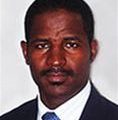

To help set the scene for the event and identify some concrete aims and objectives, keynote speakers will be asked as part of their presentation to give an overview of what they see as the key spectrum challenges and opportunities for the region; and on what they feel should be the spectrum targets for the region in the short, medium and long term. These presentations will then be followed by an interactive voting session, where both in-person and virtual attendees will be asked to add their thoughts on these 2 questions, before a panel discussion involving key industry and policy voices is held to address the points that have been raised, and to look at the best way forward to deliver a spectrum strategy that works for Africa.

Mr. Mario Maniewicz was elected Director of the ITU Radiocommunication Bureau at the ITU Plenipotentiary Conference 2018 in Dubai, United Arab Emirates. He took office on 1 January 2019.
Mario Maniewicz is an electronic engineer specialized in telecommunications. He has been with the ITU for over 30 years, where he has held various positions of responsibility in the Radiocommunication and Development Bureaux as well as in ITU Regional Offices.
As Director, Mr. Maniewicz is responsible for the management of the Radiocommunication Bureau, which organizes and co-ordinates the work of the Radiocommunication Sector whose aim is to ensure the rational, equitable, efficient and economical use of the radio-frequency spectrum and satellite orbits.




Ms Khumbudzo Ntshavheni is the Minister of Communications and Digital Technologies. She holds an MBA degree from the University of Bradford in the United Kingdom. She is also a graduate of Rand Afrikaans University (RAU), where she read for her undergraduate degree in Political Science and concurrently completed two postgraduate degrees in Development Studies and Labour Relations. She matriculated from Mbilwi Secondary school in Sibasa, Limpopo. Mbilwi remains one of the best performing public schools.
She started her career as a junior lecturer at the University Of South Africa (UNISA) and then proceeded to be South Africa’s youngest and first female Spokesperson of a Premier (Premier Ramatlhodi of Northern Province/ Limpopo). She later worked as a Chief Information Officer for the department of Local Government and Housing (Limpopo) and a Manager for Tourism Investment for the Trade and Investment Limpopo (TIL). Ms Ntshavheni was once the youngest Municipal Manager in South Africa when she worked in that position for the Ba- Phalaborwa Municipal Council and she also worked as Chief Operations Officer at the State IT Agency (SITA).
Her political career cuts across both the student and youth movements. She was the youngest activist and part of the leadership of the South African Youth Congress (SAYCO) in the then Northern Transvaal. She was part of the young student activists who mobilised and led the Congress of South African Students (COSAS) after it had unbanned itself in 1989.
On the day of the release of President Nelson Mandela, she addressed the Far Northern Transvaal sub-region’s (present day Vhembe Region) impromptu celebration rally on behalf of the Pioneers Movement she was leading. At the age of 14, she convinced President Nelson Mandela to adopt 16 years as the voting age of South Africa during the CODESA negotiations (this was when President Cyril Ramaphosa was the Secretary-General of the ANC). She has led both the youth and student movement at various capacity, including national executive committees. She has also led the ANC in her home Province of Limpopo including at the Provincial Executive Committee level, which she was also a Spokesperson for.
Before joining the 6th Parliament of the Republic of South Africa, Ms Ntshavheni was a serial entrepreneur with interests in transport, FMCG and agriculture.
His Excellency, President Cyril Ramaphosa appointed her the Minister of Communications and Digital Technologies on 05 August 2021. She was previously appointed Minister for Small Business Development on 29 May 2019 and acting Minister in the Presidency on 27 January 2021 until 05 August 2021


Hans-Martin Ihle is a member of NERA’s global Auctions Practice, which focuses on the design of allocation mechanisms, including auctions and trading, bidding strategy, and related competition, pricing, regulatory, and public policy issues. Mr. Ihle has nearly 10 years of experience in the design and implementation of auctions. He advises NERA clients on auctions and regulatory issues in energy, communications, and other sectors worldwide with a focus on the Asia-Pacific Region.
Prior to joining NERA, Mr. Ihle worked for an economic consultancy in London. During this time, he advised on the design and implementation of spectrum auctions in over a dozen countries. Mr. Ihle also implemented the software used in seven combinatorial spectrum auctions in Europe to determine winners and prices from thousands of competing bids.
Mr. Ihle advises both government bodies and companies on regulatory and policy issues in relation to spectrum management. For example, he advised UK regulator Ofcom on the development of methodologies for setting annual licence fees for liberalised 900MHz and 1800MHz spectrum to reflect full market value. His advice included the development and implementation of methodologies to determine the full market value of comparable spectrum sold in the 4G auction in 2013 using the bids submitted in this auction. For bidders, he has convened workshops on bidding strategy and run mock auctions to help the bid team understand the likely dynamics of the real auction. Mr. Ihle has developed software to support the chosen bid strategy and to analyze the behavior of other bidders. He also provides onsite client support during auctions.
In the energy arena, Mr. Ihle has worked on the design of a procurement auction for balancing services. He has also conducted research on a novel mechanism to remunerate capacity in electricity markets.
Mr. Ihle holds a Masters in Economics from the University of Cambridge, where he specialized in industrial organization, game theory, and applied econometrics.


Eiman Mohyeldin is the global Head of Spectrum Standardization for Nokia, responsible for defining and executing Nokia’s spectrum strategy and leading Nokia’s engagement on spectrum matters with customers, regulators authorities and partners in the ecosystem worldwide. She is actively involved in the World Radio Conference (WRC) process, participating in the WRC Conferences and preparatory meetings (CPM). Eiman has also contributed and led groups for the IMT technology process (4G, 5G and recently the 6G) in ITU and CEPT. Eiman is Co-Coordinator in CEPT NOW4WRC23 promoting gender equity and parity in CEPT and IT


Dr. Bienvenu Agbokponto Soglo is the Director, Government Affairs Africa & IGA CTO Liaison, and a Principal Engineer at Intel Corporation. In his current role, Dr Agbokponto Soglo is responsible for developing policy strategies and advocating for favourable government policies, regulations, and standards to support Intel’s business interests in Africa. He leads the policy and government affairs work in Africa in areas such as 5G, broadband, artificial intelligence, privacy and security and other digital transformation policies. In addition, he also leads engagements with Universities, Research Institutions, NGOs in the International Government Affairs (IGA) group; for research focused on emerging technologies and projects/initiatives at the intersection of policy and technology.
He has more than 17 years’ experience and a strong track record working in the ICT and telecommunication industry with expertise in mobile telecommunication technologies, global and regional spectrum policy, broadband strategy, corporate social responsibility, as well as governmental ICT policies. Before joining Intel Corporation in 2018, Dr Agbokponto Soglo worked at Qualcomm for more than 10 years, first as Staff Engineer then as Government Affairs Director for West and Central Africa. Prior to that, he worked at Huawei Technologies as Wireless Product Manager.
He has published several technical papers on Network Control Systems in International Journals and Conferences, including in the European Journal of Control. He has also presented at many international forums, conferences and meetings across the globe including at the WTO and the ITU; and held leadership positions in ITU-R Working Party 5D; and is the Chair of the GSA ATU Spectrum team.
Dr. Agbokponto Soglo holds a Ph.D. degree in Control Science & Engineering from Beijing Tsinghua University (2005), an MSc in Control Theory & Control Engineering from Dalian University of Technology (2002), and a BSc in Automatic Control from Dalian Maritime University (1999), China. He has excellent proficiency in English, French and Mandarin.


The Luxembourg-based satellite operator on public affairs and regulatory matters with the European Union (EU), the CEPT, the Council of Europe and the ITU, under the responsibility of the SES General Counsel. He‘s now responsible for SES regulatory affairs (advocacy and licensing) in Europe, Africa and Middle East.
Cécil looks back at more than 20 years of experience in dealing with regulatory affairs, specialised in ICT regulations for media and telecommunications. His dedicated expertise covers the supervision and impact of telecoms legislations and spectrum policies, in the context of increased liberalisation in radio frequency management and usage.
Cécil has been the chairperson of the working group on regulation in ESOA (EMEA Satellite Operators Association) for several years. In this capacity, he represents the satellite sector for the development of electronic communications regulation in Europe, Africa and Middle East, and he defends the interests of the space industry in multilateral and bilateral trade negotiations between the EU and the rest of the world.
As an active member of the Global VSAT Forum (GVF), Cécil Ameil is also contributing to the coordination of the satellite sector‘s efforts to defend access to and usage of essential radio spectrum at regional and ITU levels (including for WRCs).


Moshe is responsible for developing and implementing the research, development, and innovation strategy for the CSIR within the Networked Systems and Applications impact area.
Dr Masonta has over 20 years of experience in the telecommunication sector and holds a Doctorate Degree in Electrical Engineering (Telecommunications Technology). His work contributed towards the development of evidence-based regulations and policy directives on spectrum use and management. Recently, he was part of the Department of Communication and Digital Technologies in Communication delegate to the International Telecommunication Union’s 2022 Plenipotentiary conference in Romania.
His research interests are in radio frequency (RF) spectrum management for wireless communications technologies, 5G Open Radio Access Networks, television white space technologies, Fourth Industrial Revolution (4IR) technologies, alternative broadband wireless networks for bridging the digital divide, and supporting the national policymakers and regulators within the space of wireless communications and RF spectrum.

Despite the challenging environment created by the global pandemic, preparations for WRC-23 are progressing well. Both within Africa and elsewhere in Region 1, positions are starting to emerge and good progress on preparatory studies is being seen. And now, less than a month after this event, the second inter-regional workshop is due to be held, providing the latest opportunity for different regions to come together to discuss these emerging positions. This session will provide the opportunity to take stock in the build-up to that meeting and at the progress on preparation that is being made both in Africa and elsewhere. As we move towards the final year of preparation for WRC-23, it will discuss the challenges ahead and the work that still needs to be done to ensure a successful outcome for WRC-23 for the Sub-Sahara region and more broadly.

Kezias Mwale is Radiocommunications Coordinator at African Telecommunications Union. He started his spectrum management career as a junior engineer in 2003 at the Zambia ICT Authority, rising to manager spectrum management in 2010 – a position he held until his appointment by the African Telecommunications Union (ATU) as a Radiocommunications Coordinator in 2012. He has been a keen and active contributor to national, regional and international spectrum management successes including development of the first Zambian national spectrum plan, the SADC spectrum plan, the GE-06 Conference during which he was appointed one of the planning experts for Eastern and Southern Africa. He has immensely contributed to the current improved status of Radiocommunications affairs of ATU.
Mr Mwale holds an MSc in Broadband and Mobile Communications with distinction from the University of Kent (2008), and an MBA from the University of Nicosia (2017).












Dr. Walid SAMI is Senior Project Manager at the European Broadcasting Union (EBU), Geneva, with responsibility for co-coordinating studies on frequency planning and spectrum sharing issues. He represents EBU in number of European and International Forums dealing with Spectrum Management. He is Vice Chair of ITU-R Study Group 6 (Broadcasting) and mostly active in Working Parties 6A (Terrestrial broadcasting delivery) and 1A (Spectrum engineering techniques). Dr. SAMI has also a significant role in developing cooperation with Arab States Broadcasting Union and African Union of Broadcasters as well as Administrations members of ITU-D.

At each of the last 4 editions of this conference, a session has been held that has charted the progress, challenges and opportunities as Sub-Sahara embarks on the path to 5G and looks to deliver a harmonized continental strategy that will help to unleash its true potential. Continuing the discussion, this session will look at the work that has taken place over the last 12 months to build on crucial policy recommendations that were set out last year by ATU, and the work that is being done at a regional level by the African Union Commission. With 5G now a reality in Africa and networks starting to be rolled out across countries including Kenya, South Africa and Nigeria, how can the goal of regional harmonisation be achieved, and what impact can this have on laying the ground for the full potential of 5G to be seen?

Elizabeth Migwalla is Senior Director and Head of Government Affairs (Africa) for Qualcomm International Incorporated (Qualcomm). In this role, which she has held for eight years, Elizabeth interfaces directly with key government ministries, regulatory authorities as well as regional and international regulatory forums, in order to drive the adoption of advanced broadband wireless technologies and service on the continent.
Elizabeth’s distinguished career in various aspects of telecommunications engineering, operations, services and policy spans more than 31 years. She has built a reputation as one of Africa’s leading experts on communications policy through her many accomplishments during this period. In 2012 Elizabeth was named among the top 50 female executives in Middle East and Africa by CommsMEA magazine.
Prior to joining Qualcomm Elizabeth served The Boeing Company as its Regional Director for Regulatory Affairs for four years. Elizabeth also performed a similar role for ICO Global Communications for a period of five years.
Before entering the private sector in 1997, Elizabeth worked at the Kenya Post and Telecommunications Corporation, as both head of its International Services and Planning and Engineering departments. Elizabeth holds Bachelor’s and Master’s degrees in Engineering from the University of Nairobi (Kenya), and an MBA from Bond University in Australia.




Mr. Obam leads a cross-functional team of experts to advice the government on development of ICT sector policies, strategies and legislation.
Expert in radiocommunication and spectrum anagement.
Chair of ITU Radiocommunication Advisory Group (RAG).
Awarded Head of State Commendation (HSC) by President of Kenya in recognition of distinguished & outstanding services in ICT sector.
MSc. Engineering Management – University of Southern California; BSc. – University of Nairobi


Engineer Abraham Oshadami is the Head of Spectrum Administration Department of the Nigerian Communications Commission (NCC) and has worked in the NCC for over 18 years.
A First-Class Graduate of Electrical engineering from the University of Ibadan Nigeria with more than 28 years of experience in various industry sectors both in Private and Public in the areas of Information Technology, Computer hardware designs and Maintenance, Information System Management and Spectrum Management.
He has represented Nigeria in various international capacity and events such African Telecommunications Union (ATU) and the International Telecommunications Union (ITU). He is a registered Engineer with the Council for the Regulation of Engineering in Nigeria (COREN), a member of the Nigerian Society of Engineers (NSE) and a member of the West African Society for Communication and Administration (WASCA)


Elizabeth Migwalla is Senior Director and Head of Government Affairs (Africa) for Qualcomm International Incorporated (Qualcomm). In this role, which she has held for eight years, Elizabeth interfaces directly with key government ministries, regulatory authorities as well as regional and international regulatory forums, in order to drive the adoption of advanced broadband wireless technologies and service on the continent.
Elizabeth’s distinguished career in various aspects of telecommunications engineering, operations, services and policy spans more than 31 years. She has built a reputation as one of Africa’s leading experts on communications policy through her many accomplishments during this period. In 2012 Elizabeth was named among the top 50 female executives in Middle East and Africa by CommsMEA magazine.
Prior to joining Qualcomm Elizabeth served The Boeing Company as its Regional Director for Regulatory Affairs for four years. Elizabeth also performed a similar role for ICO Global Communications for a period of five years.
Before entering the private sector in 1997, Elizabeth worked at the Kenya Post and Telecommunications Corporation, as both head of its International Services and Planning and Engineering departments. Elizabeth holds Bachelor’s and Master’s degrees in Engineering from the University of Nairobi (Kenya), and an MBA from Bond University in Australia.


Mr. Obam leads a cross-functional team of experts to advice the government on development of ICT sector policies, strategies and legislation.
Expert in radiocommunication and spectrum anagement.
Chair of ITU Radiocommunication Advisory Group (RAG).
Awarded Head of State Commendation (HSC) by President of Kenya in recognition of distinguished & outstanding services in ICT sector.
MSc. Engineering Management – University of Southern California; BSc. – University of Nairobi




Franklin has over 15 years’ experience in IT & Telecoms industry spanning both technical and commercial roles. In the current role he is responsible for the Fixed Data business charged with delivering great Customer Experience to enable Safaricom become the trusted partner of choice for connectivity, security and entertainment for Homes and Businesses. He has grown the business to connect over 250,000 customers using Fibre and Fixed Wireless Access technologies most recently using 5G. Beyond connectivity, he has delivered rich value adds to the connected customers such as content, internet security and parental control, Home Insurance, Converged Fixed and Mobile solutions, Surveillance among others.
Franklin holds an MA in Project Planning and Management, BSc. in Computer Science and is currently pursuing an MA in Philosophy.




Engineer Abraham Oshadami is the Head of Spectrum Administration Department of the Nigerian Communications Commission (NCC) and has worked in the NCC for over 18 years.
A First-Class Graduate of Electrical engineering from the University of Ibadan Nigeria with more than 28 years of experience in various industry sectors both in Private and Public in the areas of Information Technology, Computer hardware designs and Maintenance, Information System Management and Spectrum Management.
He has represented Nigeria in various international capacity and events such African Telecommunications Union (ATU) and the International Telecommunications Union (ITU). He is a registered Engineer with the Council for the Regulation of Engineering in Nigeria (COREN), a member of the Nigerian Society of Engineers (NSE) and a member of the West African Society for Communication and Administration (WASCA)

African countries proposed at WRC-19 to study the identification of 6425-7125 MHz for IMT. The proposal is on the agenda of WRC-23.In July last year, a recommendation was made by ATU to enable licence-exempt technologies to operate in 5925-6425 MHz. Globally There is a debate on the balance of unlicensed and licensed services in the 5925-7125 MHz band. The IMT community argues that broadband connectivity in Africa is largely provided through mobile networks, and this band would provide additional capacity for 5G and for fixed wireless access in the future. On the other hand the WiFi community argue that making it available on a licence-exempt basis is vital to help addressing the digital divide, improving rural connectivity and accelerate economic innovation. This session will look at the arguments on both sides, and at where the balance of licenced and licence-exempt use across the 6Ghz band should lie.
● Where does the balance lie between licenced and licence-exempt use across the 6Ghz spectrum?
● What is the status of the WRC-23 preparations and what should be the approach of the Sub-Sahara region to the upper portion of the band?
● What socio-economic benefits would be offered by making the spectrum in the band available on an unlicenced or a licensed basis respectively? What approach would provide the best option to maximise these benefits across both developed and developing countries in the Sub-Sahara region?
● To what extent is co-existence between incumbent and potential new users such as WiFi and 5G feasible? What are some potential challenges would this present and how could these be overcome?
● Is there a solution that would ensure that sufficient spectrum in the band is available for both WiFi and IMT users?

Jonathan supports telecoms operators and regulators in areas including 5G network strategy, spectrum valuation and cost modelling. In particular, he has managed the development of complex quantitative models used to help operators develop their approach to 5G and to prepare for 5G spectrum auctions.
Jonathan’s core expertise is in supporting clients to assess their spectrum strategy, often ahead of major spectrum awards. This includes regulatory support, spectrum valuation, network strategy and bid strategy work. He has also supported clients to develop their business plans, and to prepare network costing models ahead of regulatory processes.
Prior to joining Aetha, Jonathan studied Physical Sciences at the University of Cambridge.


Kalvin is responsible for delivering economic analysis across a range of GSMA programmes and initiatives. He works particularly closely with Mobile for Development (M4D), overseeing the Mobile Connectivity Index and the Mobile Industry SDG Impact Report, and supports the Regulatory and Spectrum policy teams. Recent work includes analysing the impact of spectrum pricing on consumers and assessing policy options for the 6 GHz frequency band. Before joining the GSMA, Kalvin worked at Ofcom and the UK Competition Commission.








From September 2016 to date Mortimer Hope has been Managing Director of GH Communications, an ICT Policy, Regulatory, Strategy and Business Development Consultancy based in South Africa. He is also Associate Director and Africa Lead at Policy Impact Partners (PIP), a global Consultancy Platform which helps clients impact connectivity and digital policies. In these roles he has assisted large multinational organisations with connectivity policies and future spectrum advocacy. He has also provided regulatory training and assisted telecom operators with business strategy.
Some projects Mortimer has worked on include TV White Spaces regulatory frameworks in South Africa, Kenya, Nigeria and Ghana; High Altitude Platform Stations (HAPS) trial in South Africa and additional spectrum for HAPS at the ITU and African Telecommunications Union (ATU); Tiered Spectrum Sharing report covering South Africa, Colombia and Malaysia; Licence exempt Wi-Fi in the 6 GHz band (Wi-Fi 6E); Regulatory Sandbox Framework; rural broadband projects in Mozambique and Benin; and a HAPS study for the Eastern Cape Province of South Africa.
Mortimer is a regular speaker at Connectivity conferences in Africa. He has delivered presentations to various audiences, including to SADC Ministers responsible for ICT, on HAPS, rural broadband connectivity, spectrum sharing and the effects on humans of electromagnetic frequencies. He also publishes opinion pieces such as this one on connecting the unconnected.


Bio Coming Shortly


Charley Lewis (PhD, MComm) has extensive experience across the field of ICT sector policy and regulation, ranging from telecommunications and broadcasting to broadband and the Internet. His knowledge and expertise covers a wide array of key areas. These range from universal access and service, through the digital divide, consumer protection, quality of service, statistics and indicators, to spectrum management and the 4th industrial revolution.
Dr Lewis’ varied career includes: High School Teacher of Mathematics and English; Information Systems Analyst; HoD IT at COSATU (Congress of SA Trade Unions); Senior Lecturer at the University of the Witwatersrand; and Independent Analyst and Researcher. He has managed and taught professional development and academic courses on ICT policy and regulation to policy-makers, regulators and industry practitioners.
Dr Lewis holds a BA Hons in English, a Higher Education Diploma, an M Comm in Management of Information Systems, and the degree of Doctor of Philosophy. He is a published author, with his book, Regulating Telecommunications in South Africa: Universal Access and Service (Palgrave Press, 2020) following on from the research for his award-winning PhD thesis.
Dr Lewis recently served on the Ministerial Task Team on Post-Covid-19 Economic Response Strategy, having previously been appointed to serve on South Africa’s national ICT Policy Review Panel (2012-2015).

The process of bringing spectrum to market is not a simple one, and there are many different elements for regulators to consider when looking to design a process for assigning spectrum licences that ensures an efficient allocation of the available bandwidth at a fair price; and ultimately delivers a competitive market and encourages innovation. With a number of successful awards having taken place recently in the region, this session will provide the opportunity to look back at these and at the approaches that were taken. It will then move on to look more broadly at the different options that are available to regulators when looking at setting spectrum prices and designing award mechanisms, and at what needs to be done in order to ensure a successful outcome. Focussing on the importance of planning ahead and the role that the provision of a roadmap for spectrum release can play in helping to provide regulatory certainty and promote investment and innovation, it will look to the future and at what needs to be done to ensure that the full value of spectrum that is made available can be harnessed as quickly and as efficiently as possible.
In March this year, ICASA successfully completed an auction of key spectrum bands, with six bidders paying a total of R14 billion for licences across the 700 MHz, 800 MHz, 2.6 GHz and 3.5 GHz bands. This session will offer a unique ‘360 degree’ case study of the auction and award process, with perspectives from the regulator responsible for the auction; the experts advising on design and strategy; and operators who took part and were successful in securing spectrum.



Hans-Martin Ihle is a member of NERA’s global Auctions Practice, which focuses on the design of allocation mechanisms, including auctions and trading, bidding strategy, and related competition, pricing, regulatory, and public policy issues. Mr. Ihle has nearly 10 years of experience in the design and implementation of auctions. He advises NERA clients on auctions and regulatory issues in energy, communications, and other sectors worldwide with a focus on the Asia-Pacific Region.
Prior to joining NERA, Mr. Ihle worked for an economic consultancy in London. During this time, he advised on the design and implementation of spectrum auctions in over a dozen countries. Mr. Ihle also implemented the software used in seven combinatorial spectrum auctions in Europe to determine winners and prices from thousands of competing bids.
Mr. Ihle advises both government bodies and companies on regulatory and policy issues in relation to spectrum management. For example, he advised UK regulator Ofcom on the development of methodologies for setting annual licence fees for liberalised 900MHz and 1800MHz spectrum to reflect full market value. His advice included the development and implementation of methodologies to determine the full market value of comparable spectrum sold in the 4G auction in 2013 using the bids submitted in this auction. For bidders, he has convened workshops on bidding strategy and run mock auctions to help the bid team understand the likely dynamics of the real auction. Mr. Ihle has developed software to support the chosen bid strategy and to analyze the behavior of other bidders. He also provides onsite client support during auctions.
In the energy arena, Mr. Ihle has worked on the design of a procurement auction for balancing services. He has also conducted research on a novel mechanism to remunerate capacity in electricity markets.
Mr. Ihle holds a Masters in Economics from the University of Cambridge, where he specialized in industrial organization, game theory, and applied econometrics.


Vutomi Mabunda-Jones is the Managing Director of Tirhani Auctioneers, a South African Auction house specialising in the disposal of movable and immovable assets. Vutomi is a former commercial pilot who holds executive and non-executive directorships in the following fields: Technology, Software Development, Web Development and Management Services.
Vutomi was the local project lead for the three-party consortium (Nera Consortium) that executed the spectrum auction on behalf of the Independent Communication Authority of South Africa.


I have more than 35 years professional experience in the telecommunication sector (with Telkom) of which almost 30 years focussed on radio frequency spectrum matters.
During my professional career at Telkom I worked in:
Regulatory Affairs – Spectrum, Technical and International regulations (Executive) (current)
Regulatory Affairs – Spectrum regulations, standards and ITU matters (Senior Specialist)
Radio and spectrum strategy and regulations (Manager)
Radio regulations and radio interference (Manager)
Spectrum management (Technologist) and
Network transmission maintenance (Technician/Senior Technician).
During my almost 30 years involved in spectrum management I represented Telkom on various national, regional and international forums and committees:
Since 1997 I attended all ITU World Radiocommunications Conferences (international treaty conference for the development of International Radio Regulations) as part of the South African delegation where I represented Telkom, South Africa, SADC and occasionally Africa as Rapporteur on various conference agenda items. I successfully led the company delegation to WRC-03, WRC-07, WRC-12 and WRC-19.
In 2013 I was elected by ATU (African Telecommunication Union) to represent Africa as Vice-Chairman to ITU’s JTG4-5-6-7, which was responsible for preparation for WRC-15 Agenda Items 1.1 and 1.2 dealing with IMT (International Mobile Telecommunications) matters. I am currently the SA and SADC Rapporteur for WRC-19 agenda item 1.13 responsible for mobile IMT-2020 spectrum.
In 2009 I was invited by CRASA (Communications Regulatory Authority of Southern Africa) to develop the SADC regional frequency allocation band plan, which frequency plan was adopted by the SADC Ministers in 2010 and subsequently updated following WRC-12 and WRC-15. I was also appointed by the ITU in 2010 to develop spectrum related papers (e.g. use of spectrum for Public Protection and Disaster Relieve in SADC) for CRASA.
I represent the company at SABS Technical Committees (TC) and Sub-Committees (SC) on wireless standardisation and is currently the Chairperson of SABS TC74/SC05 (Radio Communications).
I was responsible for many written submissions and oral representations at the Authority (ICASA), Department of Communications/Department of Communications and Digital Technology, Department of Science and Technology and Parliament on matters related to radio frequency spectrum, technical regulations and standards.
In 2006 and 2010 I represented South Africa, as part of the SA delegation, to the ITU Plenipotentiary Conference in Antalya (Turkey) and Guadalajara (Mexico) respectively. In my current role at Telkom I am responsible for all spectrum and international regulatory matters as well as all technical regulations within Telkom.


Bio Coming Shortly


Dobek Pater has over twenty years’ experience in the telecoms industry and is currently an ICT analyst with Africa Analysis, working on a wide range of projects in Africa for a diverse client base. His previous experience includes working for a South African fibre optic cabling and systems integration company, later joining an ICT market research and advisory company in the capacity of a telecommunications analyst, and a short stint in the consumer product research field. Dobek’s career in the telecommunications sector has exposed him to strategies and technologies used by various telecoms operators and service providers, as well as telecommunications market fundamentals. In his capacity as an ICT analyst he has been responsible for analysis of numerous ICT markets in Africa and directly participated in major projects in over twenty African countries. Dobek has also presented at numerous shows and conferences in South Africa and other African countries on topics ranging from telecoms market opportunities to future technology applications. He is frequently quoted in the local and international media, and regularly appears on TV and radio shows. Dobek concentrates on the telecommunications market (including fixed line, mobile, satellite / VSAT, wireline, wireless, wholesale and retail markets), as well as the data centre and IT services markets. Among others, he undertakes market research and analysis, market modelling and forecasting, business case development, and provides advisory services.

Closing the digital divide and ensuring that citizens across Africa have reliable access to fast, reliable and affordable broadband services has been a long-standing challenge for regulators across the region. Progress in this area is undoubtably being seen, and according to the ITU, the number of people across Africa with access to broadband grew 2690% from 2010-2020 (admittedly from a very low base), with the price of access to connectivity in the region falling more than in any other region for the same period. However, there is still an extremely long way to go and much work still to be done. This session will look at the approaches that are being seen in different countries across the region, and explore the solutions that have provided the greatest level of success. It will explore recent advancements in technologies such as fixed wireless access and advanced satellite systems, and the role that these can play in delivering a solution, and the way in which industry and regulators can come together in advancing the accessibility of broadband in many parts of Africa is attributable both to the investment and business activity of the private sector as well as the policy and regulatory environment created by the authorities.

Jean-Jacques is a Senior Engineer in Radiocommunications, Electronics and Computer science who graduated in Paris in 1983.
J.J. Massima-Landji is actually ITU representative for Central Africa and Madagascar resident in Yaoundé since 2009. As Senior Adviser to the Ministry of Communications and Telecommunications of GABON, he was posted in Geneva where he spent 9 years in ITU Headquarters in Geneva as the Permanent Representative of Gabon to ITU from 2004 to 2009 and at the Telecommunications development Bureau (BDT) as Coordinator of Iraq Project, from 2000 to 2004. He spent two years as Regional Director for Central Africa for ICO Global Communications, Office based in South Africa from 1998 to 2000.”.
Senior Engineer and Director of Posts and Telecommunications in the Gabonese administration, he managed the Telecommunications of his country for more than 15 years ( Head of Telematics and computer services from 2004 to 2006, Director of Studies and Computer Science 2006 to 2010; Central Director of National Telecommunications from 1990 to 1994 and Deputy Director-General of OPT( Office des Postes et Telecommunications), Director General of the T.I.G( Societé des Telecommunications Internationales du Gabon ) in charge of Telecommunications from 1994 to 1998, and was the first Chairman of the Regulatory Body of Gabon: “Agence de Regulation des Télécommunications.
Recognized as an ICT senior expert worldwide he has a proven experience of more than 37 years in the field of ICT and computer science. He contributed to the implementation of RASCOM as a continental expert and chaired the RASCOM Board of Directors in 1994 and 1995. He attended most of the ICT and ITU big conferences.
He served also as a lecturer in the National School of post and telecommunications and in the African Institute of Informatics (IAI) from 1984 to 1987 in Libreville Gabon.
He is French-speaking, fluent in English and also graduated in English with a UN Proficiency.


Amr Ashour an Engineer graduated in 2005 holds a Bachelor of Science (B.SC.) degree in Engineering and Technology, Electrical Engineering specialization (Electronics Engineering and communication technology Branch). Specialized in Regulatory, Market Access and business development of Telecommunication aspects of Satellites systems and Networks for 15+ years.
During his area of expertise, he was exposed to several expertise and challenges, to have wide knowledge and experience in the International Radio Regulations, Radio Spectrum, Market Access, business development, telecommunications legislation, governments policies, negotiations, and licensing, which allows him to manage complex and innovative projects in challenging environment.


Bio Coming Shortly


Bio Coming Shortly


With 30+ years experience in the Telecommunication Industry Marius has held various Senior positions with extensive exposure to the Middle East and Africa pertaining to Product Management, Network Engineering, deployment and integration of Telecoms technologies. He is currently in the portfolio of Senior Strategy Consultant for Huawei Southern Africa Region.

Back in 2013, an agreement was signed by 47 Sub-Saharan African countries to turn off broadcasting signals in the 700 MHz and 800 MHz bands by June 2015. At the time, this was hailed as a “landmark agreement that would make Africa the first region to be in position to allocate spectrum in the 700 MHz and 800 MHz digital dividend bands to mobile services”. We are now 7 years on from this deadline however, this objective of digital switchover has still not been achieved in many countries. And the situation often remains complex, with legal challenges amongst a number of other factors that is blocking progress across different countries. This session will look at the factors that have contributed to this continued delay in switchover and the challenges that still need to be overcome in order to finally be able to move forward. Looking wider across the UHF band, it will also build on the discussions that took place in the WRC-23 panel discussion earlier today, to explore the work that is being done to look at the future of the 470-694 MHz band, and the overall use and needs of existing services across the entire 470-960 MHz range. What does the future hold for the key users across the UHF frequencies, and how can it be ensured that the potential of spectrum in these frequencies is maximised for the benefit of all?

Mark (Principal) is part of Analysys Mason’s Regulation practice, and is based in the company’s Cambridge office. He joined Analysys Mason in 2003 and has advised a variety of clients, including national regulators, fixed and mobile operators, media players, equipment vendors and investors on a wide range of projects around the world.
Mark’s work focuses mainly on radio spectrum and wider regulatory issues across the telecoms and media sectors. Among other topics, he has particular expertise in spectrum valuation and auction support, spectrum policy, and forecasting the future demand for spectrum.
His other areas of expertise include media regulation, with a focus on competition issues in pay-TV markets, content rights issues and TV advertising. Mark’s wider regulatory experience includes work on a range of competition issues, such as wholesale pricing, predatory pricing and margin-squeeze analysis, and core and access network cost modelling. Mark has also advised on the pricing of fixed and mobile telephony services and has managed several projects to support operators in the introduction of new tariff plans.
Mark trained as a mathematician and has an MA from the University of Cambridge, as well as a Diploma in Computer Science, also from Cambridge.


Scott has over 20 years experience in the telecoms sector. Formerly the Chief Strategy Officer for KPN’s International Mobile division and CEO of KPN’s €1bn Mobile Wholesale business. Prior to that he worked in the City as an equity analyst and earlier in his career for Arthur D. Little, Ericsson and Telstra. He holds a BE in electrical engineering from Melbourne University and an MBA from Oxford University. During the past years, Scott has run many LTE strategy and spectrum valuation and auction projects.


A dedicated and experienced communications professional with 26 year’s experience in the communications industry including 9 year’s regulatory experience in the broadcasting and telecommunications industry being employed with the Communications Regulatory Authority of Namibia since 2012. She has been instrumental in setting regulatory frameworks in Namibia for spectrum management, infrastructure sharing, quality of service, type approval, numbering and a service technology neutral licensing regime for the telecommunications and broadcasting industry including drafting of regulations and consultative documents. Prior to joining the regulator she was responsible for various technical and commercial projects from scoping and planning stage to completion for two mobile operators in Namibia. Currently she serves as vice chairperson of the CRASA Electronic Communications Committee, SADC Rapporteur for Agenda Item 1.5 and Vice-Coordinator for chapter 1 and ATU champion for Agenda Item 1.5 in preparation for WRC-23 as well as Chairperson of WG2 within ITU TG 6/1 for Agenda Item 1.5.


Nada Abdelhafez is Head of Spectrum & Regulatory Affairs for Middle East and Africa at Shure Inc. In her role, she educates and promotes the spectrum needs for the PMSE industry in the MEA region. She influences regulations, ensures access for spectrum, advocates spectrum policy and promotes new technologies for audio PMSE. Nada works closely with administrations, regulatory authorities and policy makers to enable PMSE in MEA.
Before joining Shure, Nada worked for Etisalat UAE, where she was involved in various activities related to spectrum management, technology standardization and technology regulatory support.
Nada holds a Master’s degree in Electrical Engineering and has several publications related to optimization and deep learning in audio and video streaming.


Bertus Ehmke is the Group Head of Technical Regulatory Affairs in the MTN Group. He has worked in MTN in various capacities in the past 25 years throughout Africa and the Middle East
Formerly, he served in Group Technology leading Technology and Spectrum Strategy.
He represents the Group’s interests at several industry fora such as the GSMA Future Spectrum Group, Strategic Spectrum Management Group, Future of Spectrum Access Group and EMF Forum.
Bertus holds Bachelor’s Degrees in Electronic Engineering, Commerce and Marketing Management and a Diploma in Mobile Communications




Leader of Spectrum and Policy Research Group of China Unicom, responsible for interference coordination solution between 5G and FSS in C band, and it’s national implementation.


Alexander Kuhn is a Senior Government Official at the German Federal Network Agency (BNetzA).
He is Deputy Head of Section “International Frequency affairs, frequency utilization concepts and the frequency usage plan” and the preparation for World Radiocommunication Conferences is under his responsibility. He lead the European countries (CEPT) at WRC 2015 and 2019.

The 3.4GHz-3.6GHz portion of the C-band has been allocated to mobile on a primary basis across Africa and many other regions of the world. The future of the 3.3GHz-3.4GHz and the 3.6GHz-3.8GHz portions is due to be discussed in detail at WRC-23. Regulators and policymakers tasked to make a decision on this highly sought after spectrum are faced with the question of where the balance lies when looking to meet the needs of both mobile and satellite in the 3.3-4.2 GHz band that both see as vital to their future. This session will explore the work being done in this area both ahead of WRC-23 and more broadly, and the positions that are emerging. It will look at the extent to which it is important that a harmonised approach is achieved both within the Africa and across region 1, as well as discussing the possibility of co-existence between mobile and satellite in the band, and the extent to which new emerging technologies could help to make this a more realistic option.

Jonathan supports telecoms operators and regulators in areas including 5G network strategy, spectrum valuation and cost modelling. In particular, he has managed the development of complex quantitative models used to help operators develop their approach to 5G and to prepare for 5G spectrum auctions.
Jonathan’s core expertise is in supporting clients to assess their spectrum strategy, often ahead of major spectrum awards. This includes regulatory support, spectrum valuation, network strategy and bid strategy work. He has also supported clients to develop their business plans, and to prepare network costing models ahead of regulatory processes.
Prior to joining Aetha, Jonathan studied Physical Sciences at the University of Cambridge.




Hazem Moakkit is a veteran of the satellite industry where he has worked for over 22 years in various capacities. He currently serves as the Vice President of Spectrum Development at O3b Networks where he leads the creation and implementation of O3b’s global spectrum strategy.
Prior to O3b, Hazem spent 5 years at Yahsat in the United Arab Emirates as the Director or Regulatory & Spectrum Affairs where he created and managed the spectrum strategy, and was a key member of the corporate strategy team. Mr. Moakkit led the acquisition of vital orbital assets for the start-up operator and worked closely with regulators to obtain the required licenses. He was also instrumental in formulating the expansion strategy for Yahsat in Africa and South America.
Prior to joining Yahsat, Mr. Moakkit worked in various roles at Intelsat (previously PanAmSat) where he rose through the ranks to become a key member of the spectrum & regulatory group in Washington. There, Mr. Moakkit was responsible for frequency coordination activities for the Intelsat fleet of over 50 satellites spanning multiple administrations. During his tenure, he also worked in various system and sales engineering roles.
Early on in his career, Mr. Moakkit was a system integrator at ATCI, a nascent yet ambitious satellite system integrator based in Mesa, Arizona. While at ATCI he gained valuable hands-on experience designing, building and operating RF systems for Fortune 500 clients.
Mr. Moakkit holds a bachelor’s degree in Electrical Engineering from Arizona State University, an MBA degree from Georgetown University.


Kamal is a Policy Manager on the Africa Team. In his role, Kamal is involved in the delivery of GSMA Advocacy programmes in the Sub-Saharan Africa region and the dissemination of messages on a wide variety of policy topics, including Spectrum.
He has worked with the Nigerian Telecoms Regulator and, prior to joining the GSMA, he worked with Etisalat Nigeria where he managed Regulatory Compliance, Spectrum Policy and Technical Regulatory matters. Kamal has also been a member of the Technical Advisory Committee that prepares Nigeria’ s participation at International fora on spectrum and other technical matters.
Kamal holds a B.Sc in Computer Engineering from the American University of Cyprus and an M.Sc in Mobile and Personal Communications from King’s College London. In his spare time, he indulges in Photography and has been witnessed cheering for Manchester United.





ITU and Forum Global will be running a fellowship scheme for both the ITU Workshop and the Sub Sahara Spectrum Management Conference. Fellowship applications will be open to eligible Administrations in the Sub Sahara region. If you are interested to be kept informed about this when we have more information please get in touch.
For 7 years, The Sub-Sahara Spectrum Management Conference has provided the leading neutral platform for spectrum stakeholders policy discussion in the region. This event is taking place as part of The Global Spectrum Series.
The Global Spectrum Series is the world’s largest collection of regional spectrum policy conferences.
The Sub Sahara Spectrum Management Conference is now in its 7th year. The 2021 edition welcomed over 700 delegates virtually. More information on this event and links to catch up sessions can be found below.
This event is taking place as part of the Global Spectrum Series, for further information on speaking, sponsorship or visibility opportunities, and to discuss how you can maximize the value of involvement, please contact Dan Craft on [email protected] or on +44 (0) 2920 783 020.
The Cape Town International Convention Centre
Entrance 1
Room 2.60 (second floor)
Convention Square
1 Lower Long Street
Cape Town, 8001
© Copyright Forum Europe. All rights reserved | Privacy Policy | Terms and Conditions | Cookies Policy | Booking Terms and Conditions | Registered in UK | Registered Office: 5 Sovereign Quay, Cardiff CF10 5SF | Tel: +44 (0) 2920 783 020 | Email: [email protected]